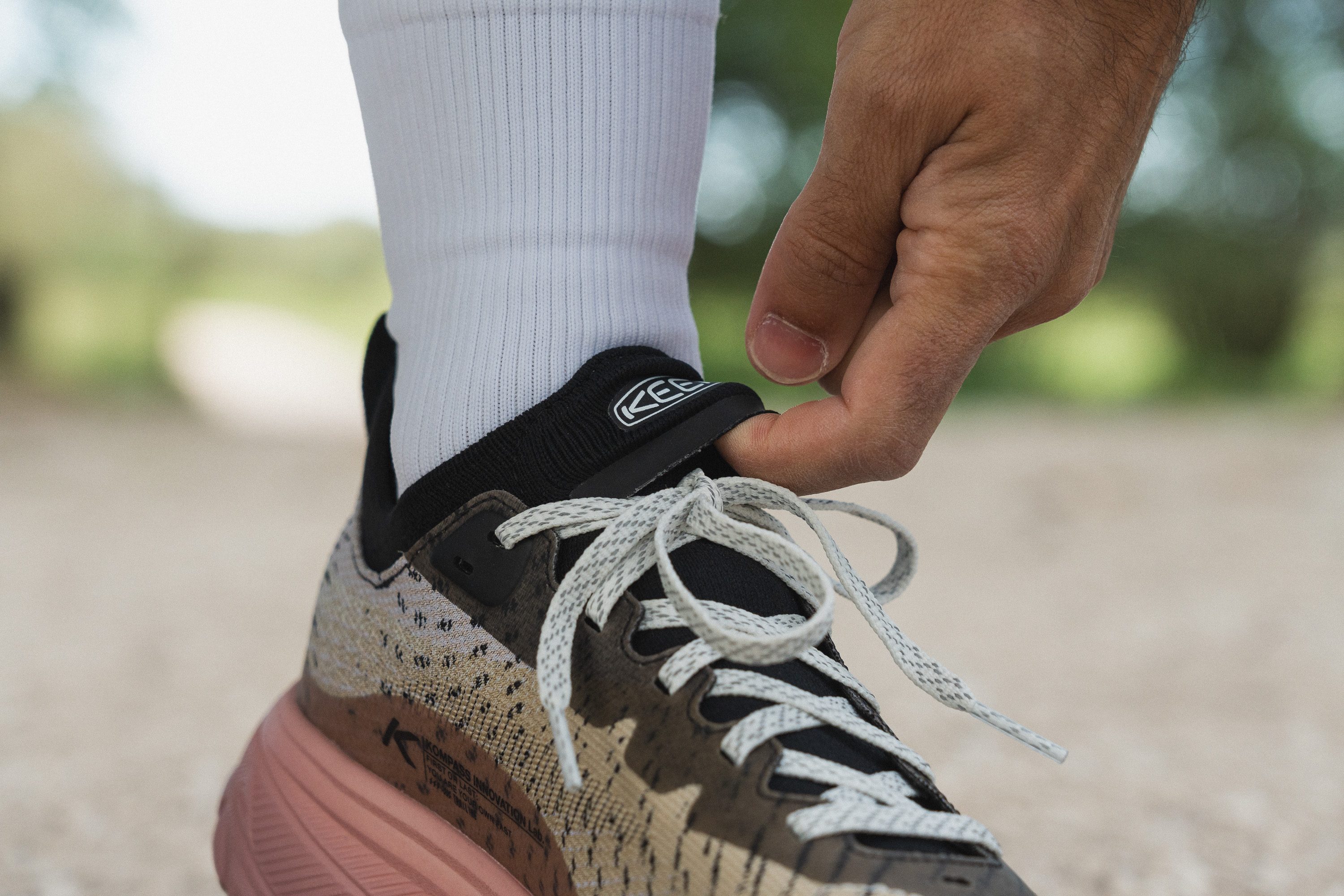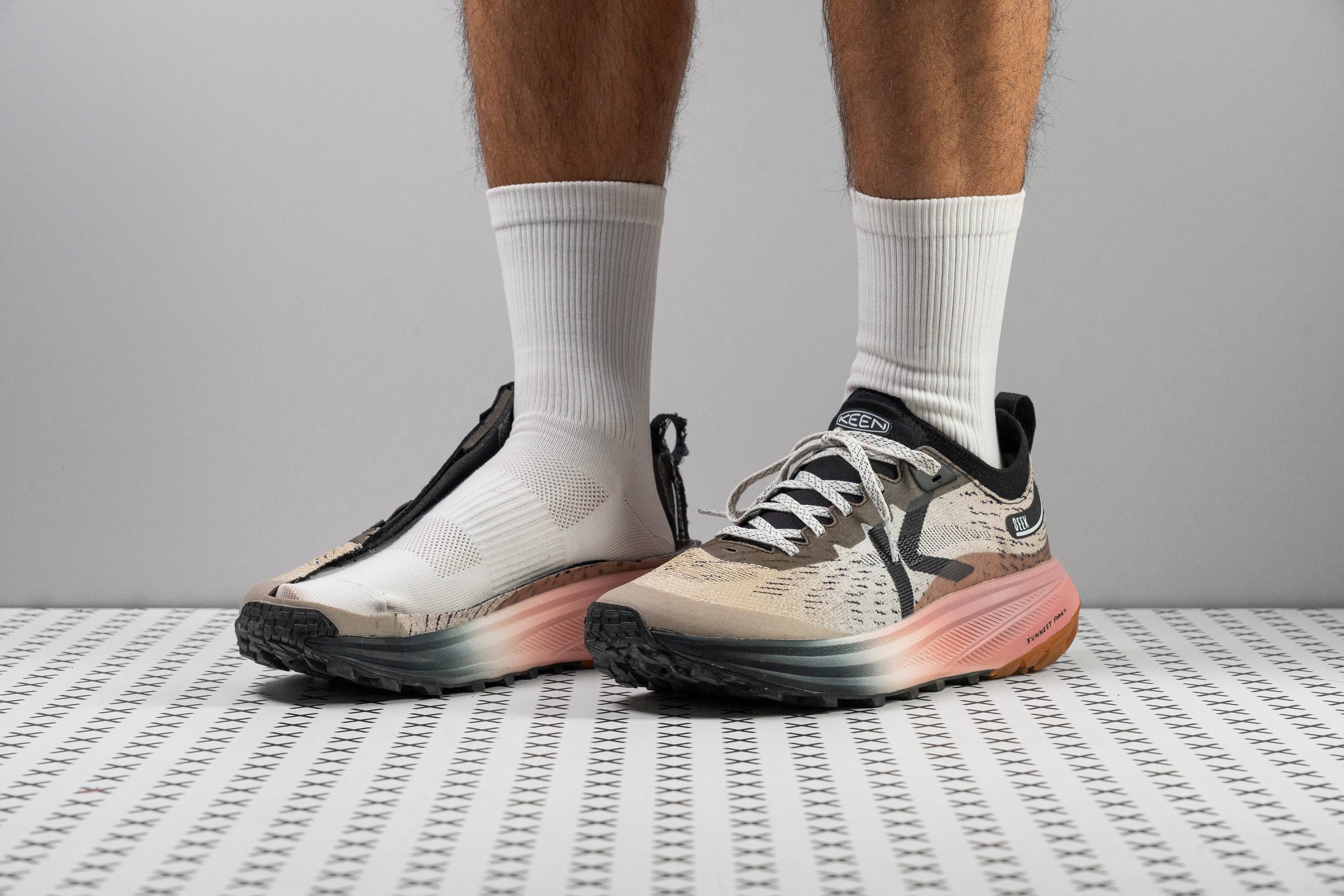Our verdict
- Top pick in best running shoes for hiking
- Top pick in best mud running shoes
Pros
- High shock absorption
- Remarkable overall durability
- High-quality knit upper
- Super-comfy sock-like tongue
- Advanced outsole design
- Works well for hiking too
- Handles well cold temperatures
- Flexible despite high-stack build
Cons
- Price may be high for some
- Heavier than competitors
- Not ideal for narrow-footed individuals
- Limited heel stability
Audience verdict
Comparison
The most similar running shoes compared
+ + Add a shoe | |||||
|---|---|---|---|---|---|
| Audience score | 90 Superb! | 71 Bad! | 88 Great! | 87 Great! | |
| Price | £190 | £170 | £160 | £150 | |
| Trail terrain | LightModerate | LightModerate | ModerateTechnical | ModerateTechnical | |
| Arch support | Neutral | Neutral | Neutral | Neutral | |
| Weight lab Weight brand | 10.8 oz / 305g 10.9 oz / 309g | 11.1 oz / 315g 11.7 oz / 332g | 10.3 oz / 293g 10.4 oz / 295g | 10.6 oz / 301g 10.6 oz / 301g | |
| Drop lab Drop brand | 8.6 mm 6.0 mm | 9.0 mm 8.0 mm | 7.2 mm 4.0 mm | 7.1 mm 4.0 mm | |
| Strike pattern | HeelMid/forefoot | HeelMid/forefoot | Mid/forefoot | Mid/forefoot | |
| Size | - | - | True to size | True to size | |
| Midsole softness | Soft | Soft | Soft | Soft | |
| Difference in midsole softness in cold | Small | Small | Normal | Normal | |
| Toebox durability | Good | Decent | Good | Very bad | |
| Heel padding durability | Good | Decent | Good | Decent | |
| Outsole durability | Good | Good | Good | - | |
| Breathability | Moderate | Moderate | Moderate | Moderate | |
| Width / fit | Medium | Medium | Medium | Medium | |
| Toebox width | Wide | Medium | Narrow | Narrow | |
| Stiffness | Moderate | Stiff | Moderate | Moderate | |
| Torsional rigidity | Moderate | Stiff | Stiff | Moderate | |
| Heel counter stiffness | Flexible | Moderate | Flexible | Moderate | |
| Lug depth | 4.1 mm | 4.4 mm | 3.9 mm | 5.0 mm | |
| Heel stack lab Heel stack brand | 36.3 mm 38.5 mm | 42.9 mm 45.0 mm | 38.0 mm 33.0 mm | 38.6 mm 39.4 mm | |
| Forefoot lab Forefoot brand | 27.7 mm 32.5 mm | 33.9 mm 37.0 mm | 30.8 mm 29.0 mm | 31.5 mm 35.4 mm | |
| Widths available | Normal | Normal | Normal | NormalWide | |
| Season | All seasons | All seasons | All seasons | All seasons | |
| Removable insole | ✓ | ✓ | ✓ | ✓ | |
| Orthotic friendly | ✓ | ✓ | ✓ | ✓ | |
| Ranking | #146 Top 40% | #362 Bottom 2% | #129 Top 35% | #158 Top 43% | |
| Popularity | #315 Bottom 14% | #121 Top 33% | #83 Top 23% | #22 Top 6% |
Who should buy
We found the KEEN Seek especially well-suited for:
- Fans of the brand who love their hiking shoes.
- Heel strikers seeking a well-cushioned yet flexible ride—something increasingly rare today.
- Anyone with wide feet looking for a versatile trail shoe that performs well across a broad range of terrains and activities.
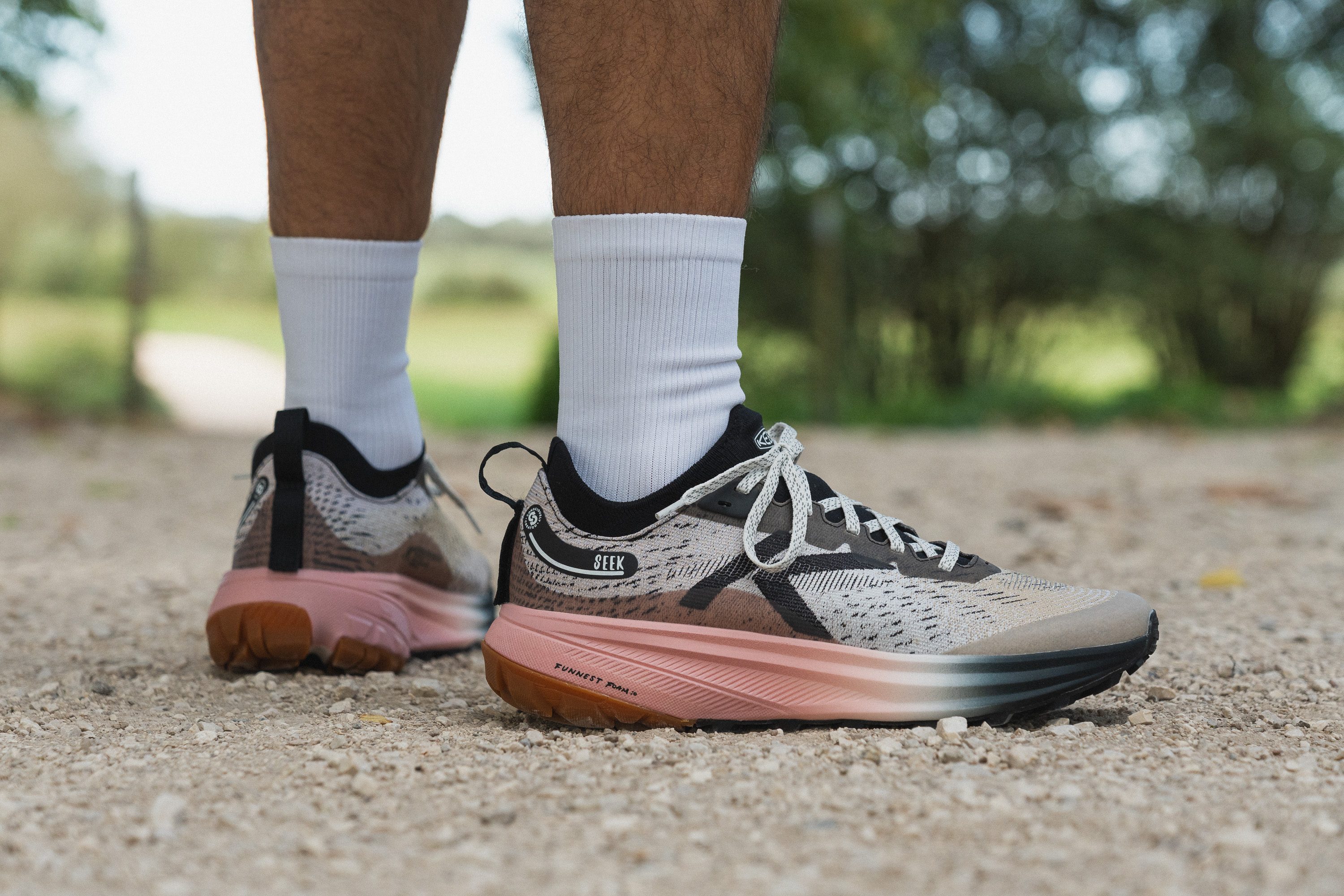
Who should NOT buy
We believe the KEEN Seek isn’t the best option for those concerned about price or value. Based on our findings, its cost is definitely high compared to other solid trail shoes. If your budget sits below the premium range, we suggest exploring the New Balance Fresh Foam X Hierro v9 or the Nike Wildhorse 10.
Additionally, we think that runners with narrow feet might find the Seek’s wide fit less secure, and that can be an issue considering its flexible upper and minimal stability features. In our view, alternatives like the Merrell Agility Peak 5 or the HOKA Mafate Speed 4 could be a better pick for those runners.
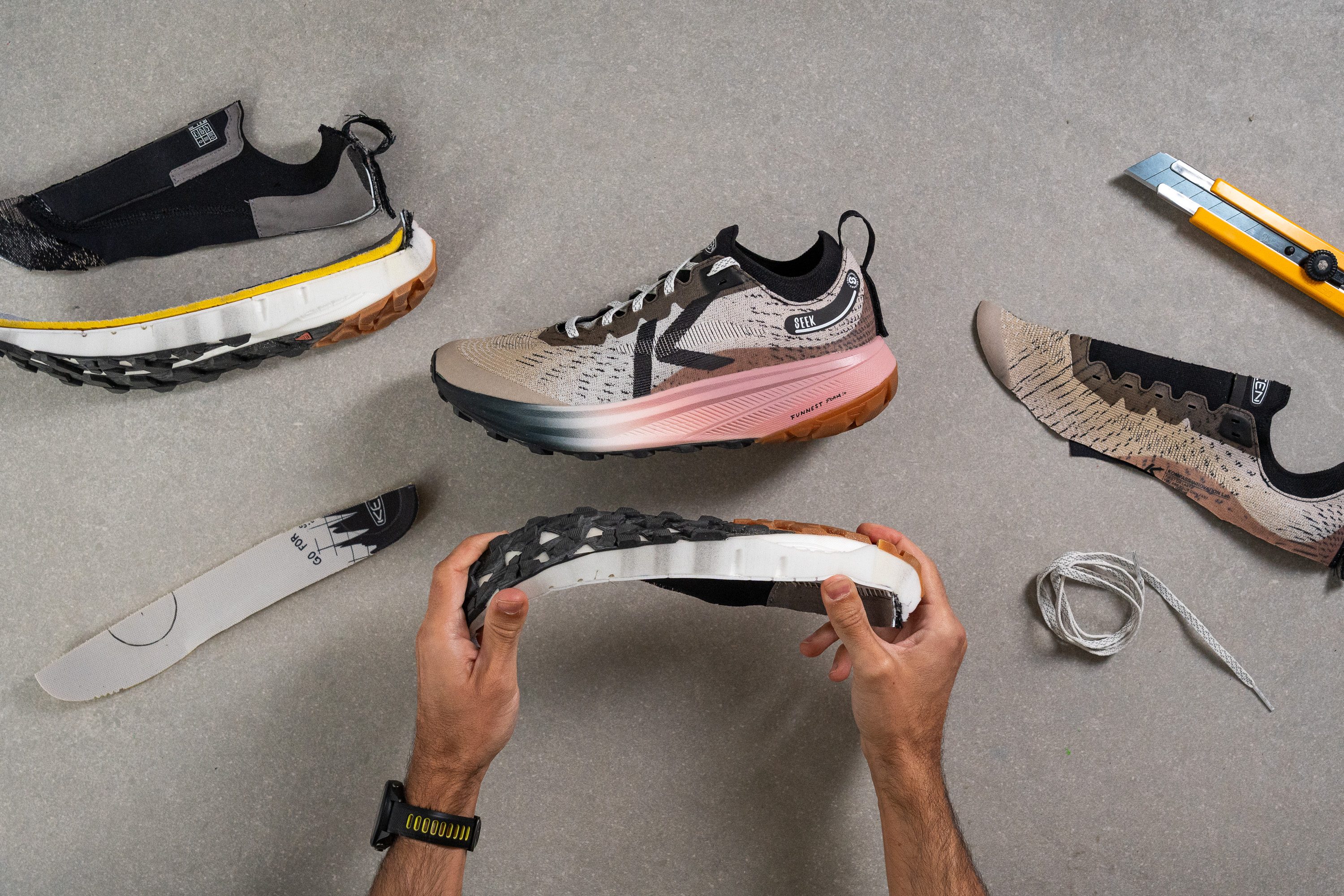
Cushioning
Shock absorption
One thing that sets the KEEN Seek apart from many trail shoes is its impressive shock absorption, both in the forefoot and the heel.
We measured 137 SA and 110 SA respectively, well above the average readings, confirming that this shoe is an excellent choice for long-distance runs or for heavier runners seeking superior impact protection.
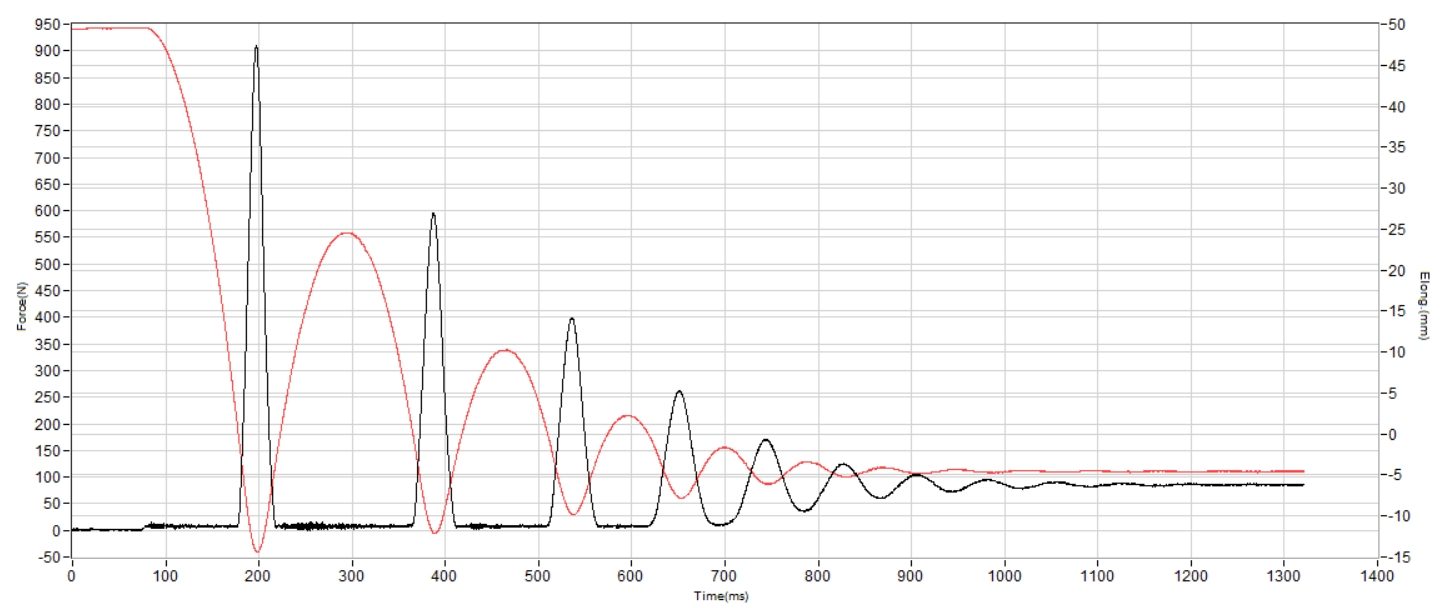
| Seek | 137 SA |
| Average | 122 SA |
Energy return
Energy return is only average, measuring 53.2% in the heel and 57.3% in the forefoot.
These figures sit right around the average, and while they’re not disappointing, the Seek’s premium price and the fact that the QuantumFoamX uses a mix of 20% PEBA and 80% EVA led us to expect slightly better responsiveness. It seems they’ll need to make it at least 50/50!
| Seek | 53.2% |
| Average | 55.6% |
Heel stack
KEEN was clearly focused on making the Seek a long-distance-ready shoe, and our tests confirmed it. Additional proof came when our calipers measured a 36.3 mm heel stack height, bringing it close to the 40 mm threshold, though slightly below the brand’s stated 39 mm.
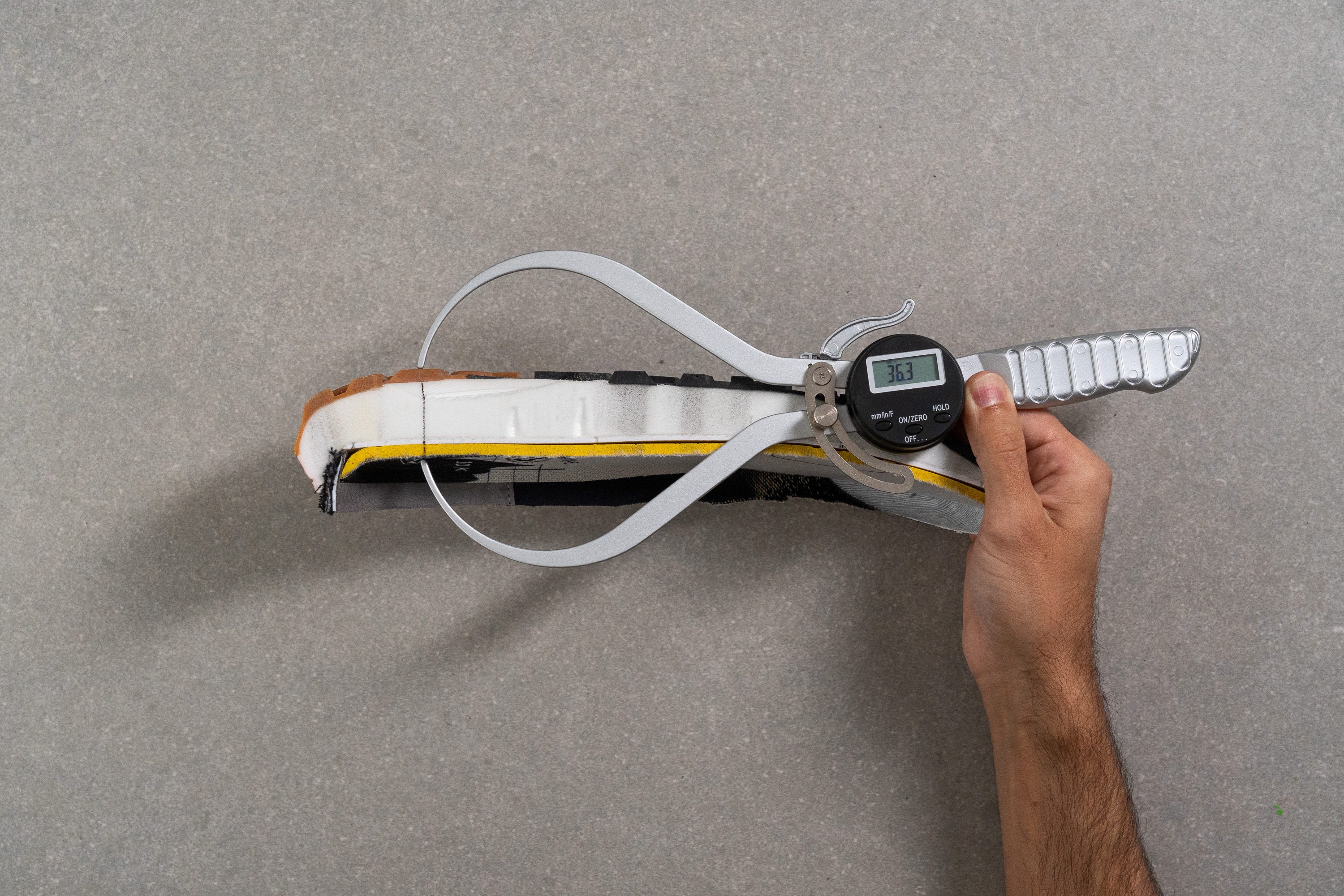
| Seek | 36.3 mm |
| Average | 32.6 mm |
Forefoot stack
The forefoot also exceeded our current lab average at 27.7 mm, making it a solid choice for runners who land on the front of the foot.
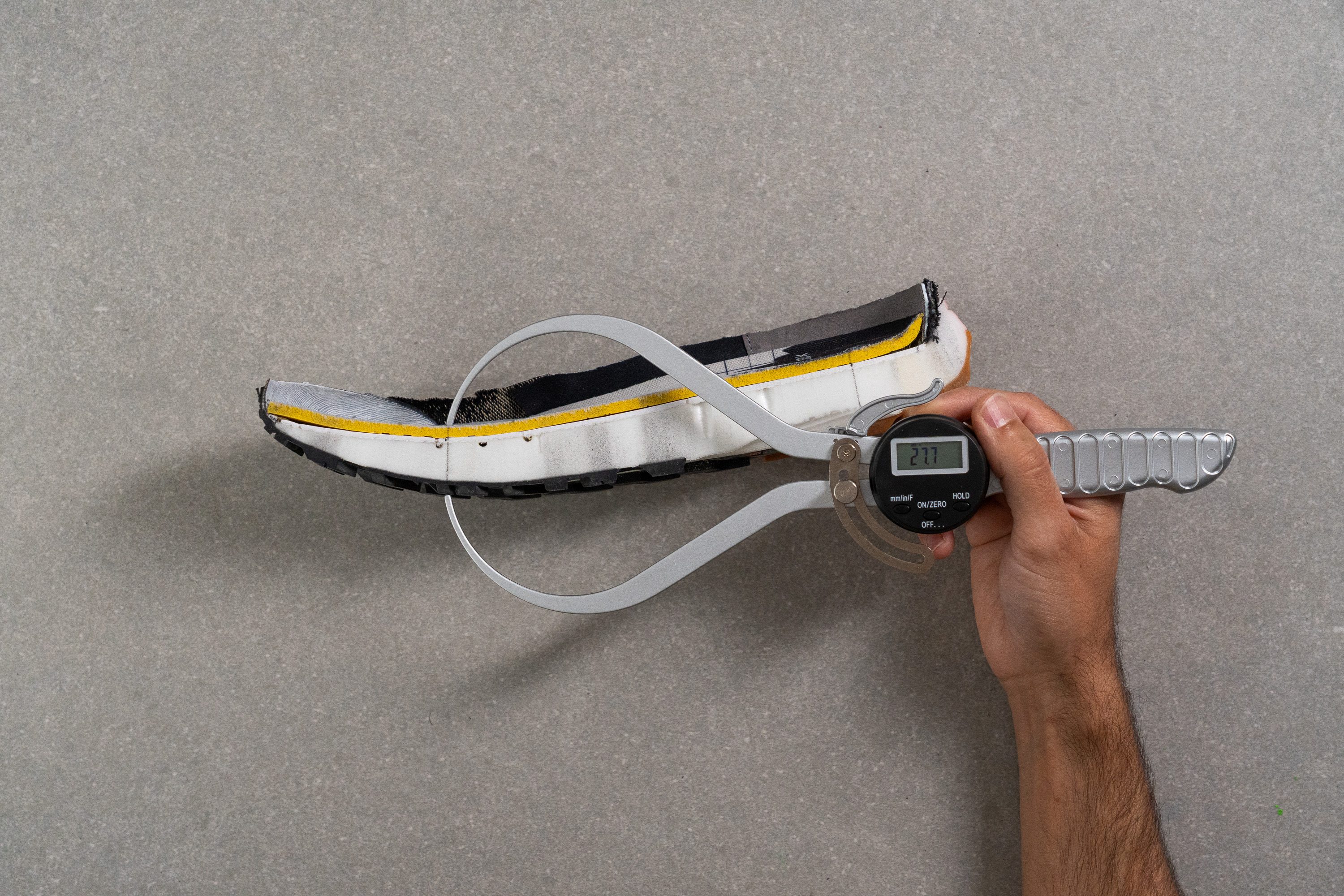
| Seek | 27.7 mm |
| Average | 25.1 mm |
Drop
The difference between measurements yields an 8.5-mm heel-to-toe drop, which accurately reflects our running experience and works well for all footstrikes.
And for anyone intrigued by the usual variations between brand-stated drop and our measurement, we've explored this subject in a detailed guide.
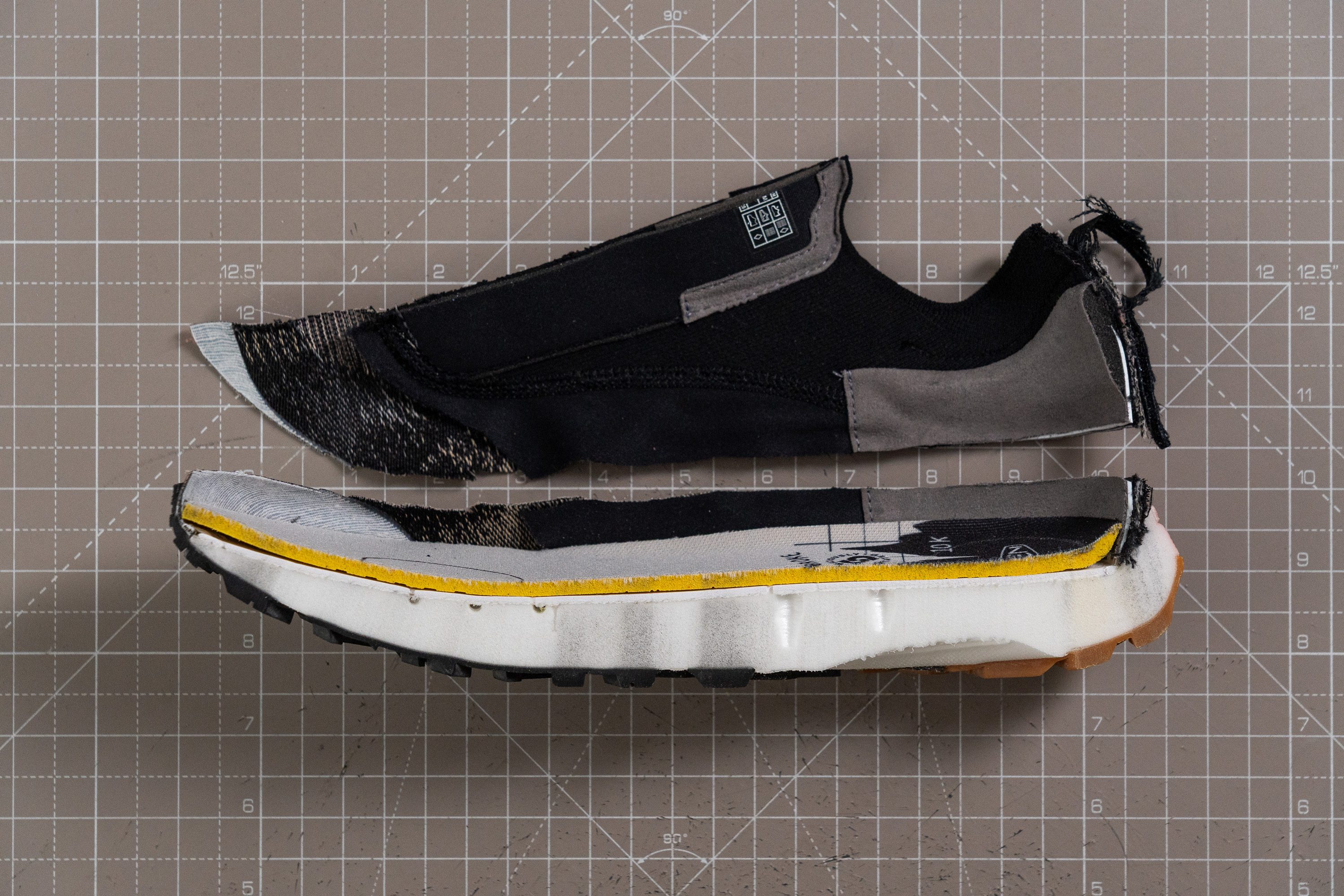
| Seek | 8.6 mm |
| Average | 7.6 mm |
Midsole softness
QuantumFoamX delivers only average responsiveness, and its softness feels the same way. It strikes a balance between comfort and stability, which is probably the safest route for a trail shoe.
At 19.0 HA, it’s slightly below our current lab average for trail models, yet with most brands moving toward softer midsoles in the past two years, we found it to feel more standard than truly soft.
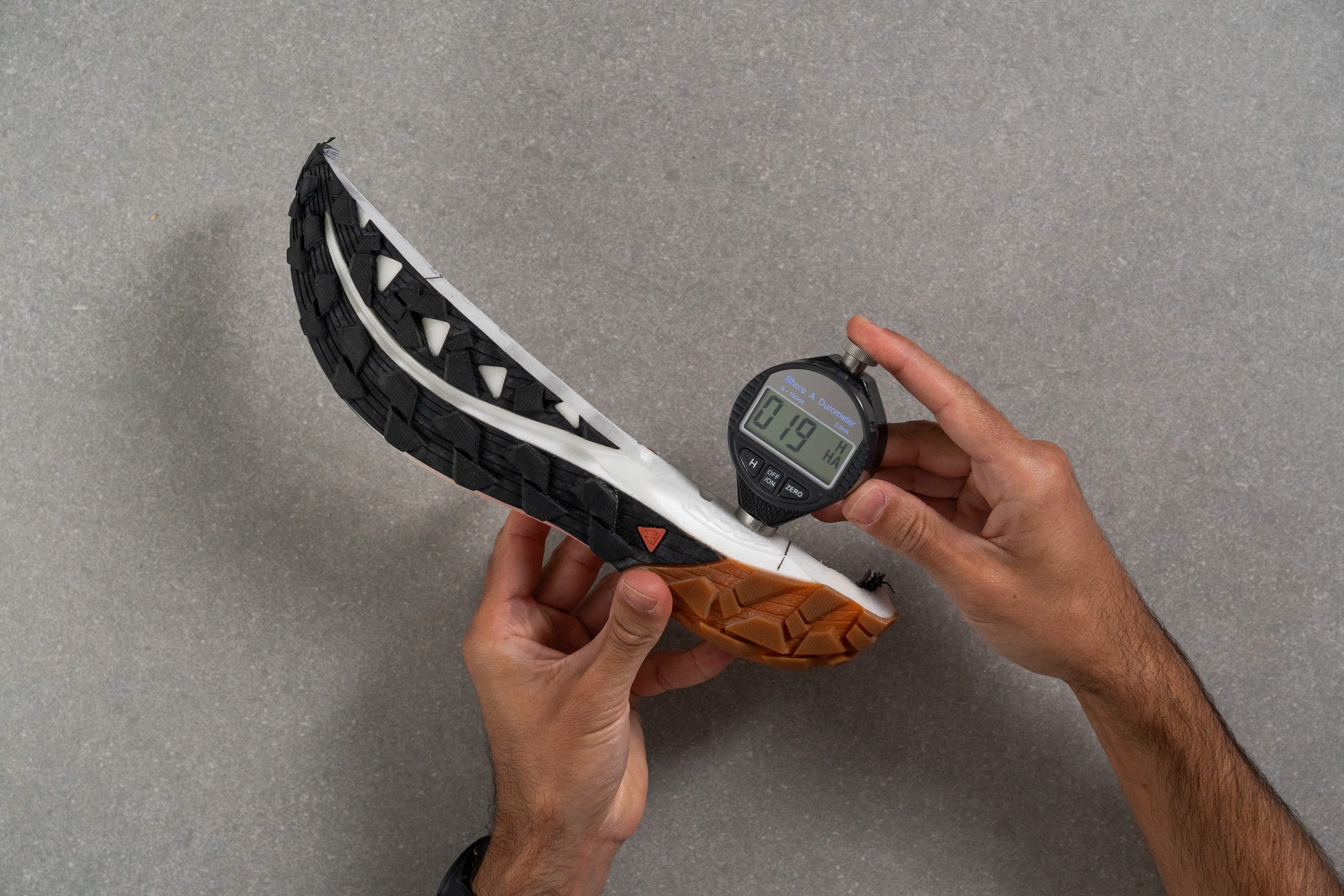
| Seek | 19.0 HA |
| Average | 21.9 HA |
Rocker
The KEEN Seek features a mild rocker in both the forefoot and heel, which helps balance its high stack height and adds a touch of dynamism for heel strikers. However, we appreciated that KEEN kept it moderate, ensuring the shoe still feels comfortable for walking or hiking.
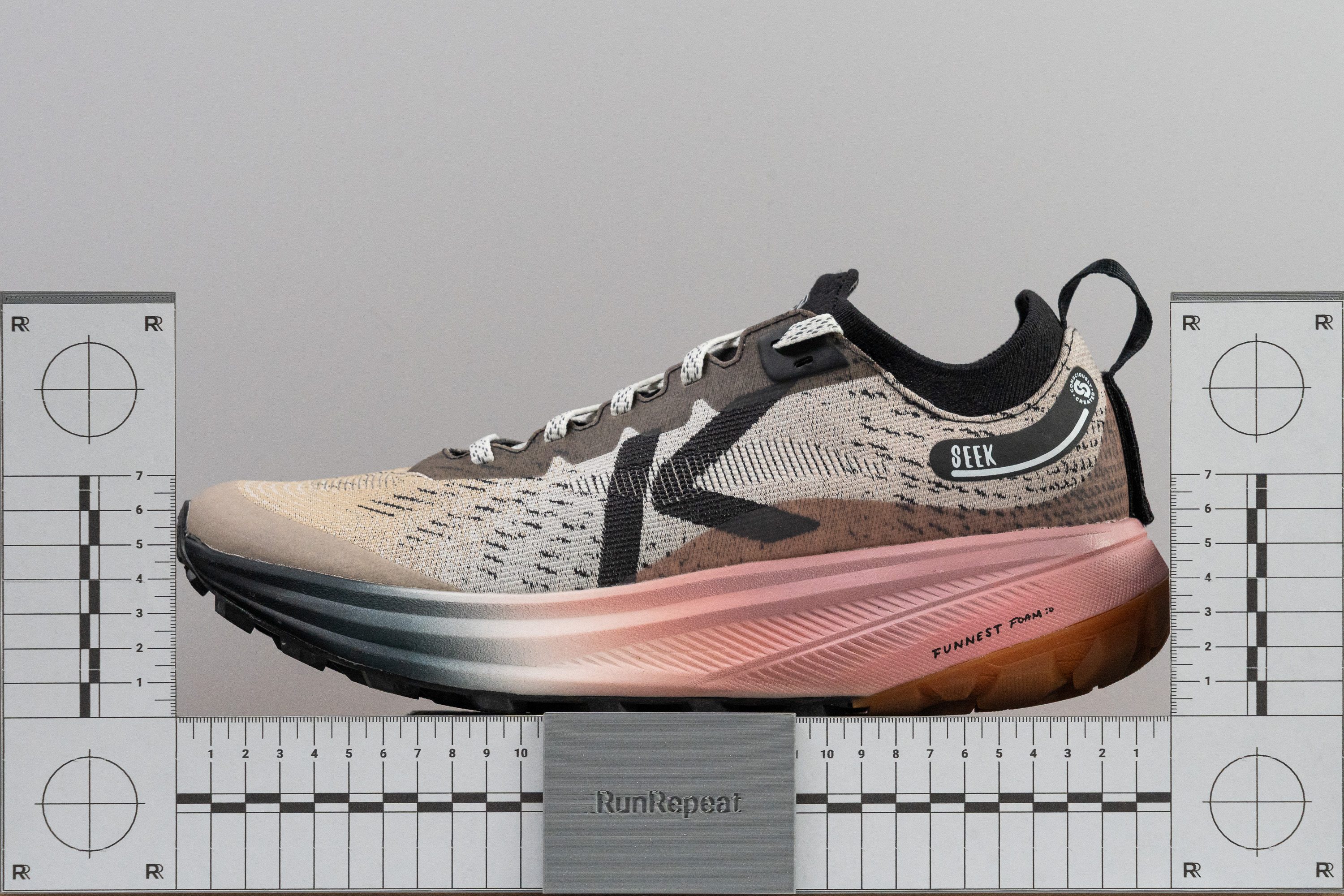
Size and fit
Size
Width / Fit
And what about the fit? Is it suitable for runners with wider feet having KEEN's Countoured Fit? We crafted a precise replica of the shoe’s interior to find out.
Our first measurement came in at 96.6 mm, clearly showing some potential for wide-footed runners.
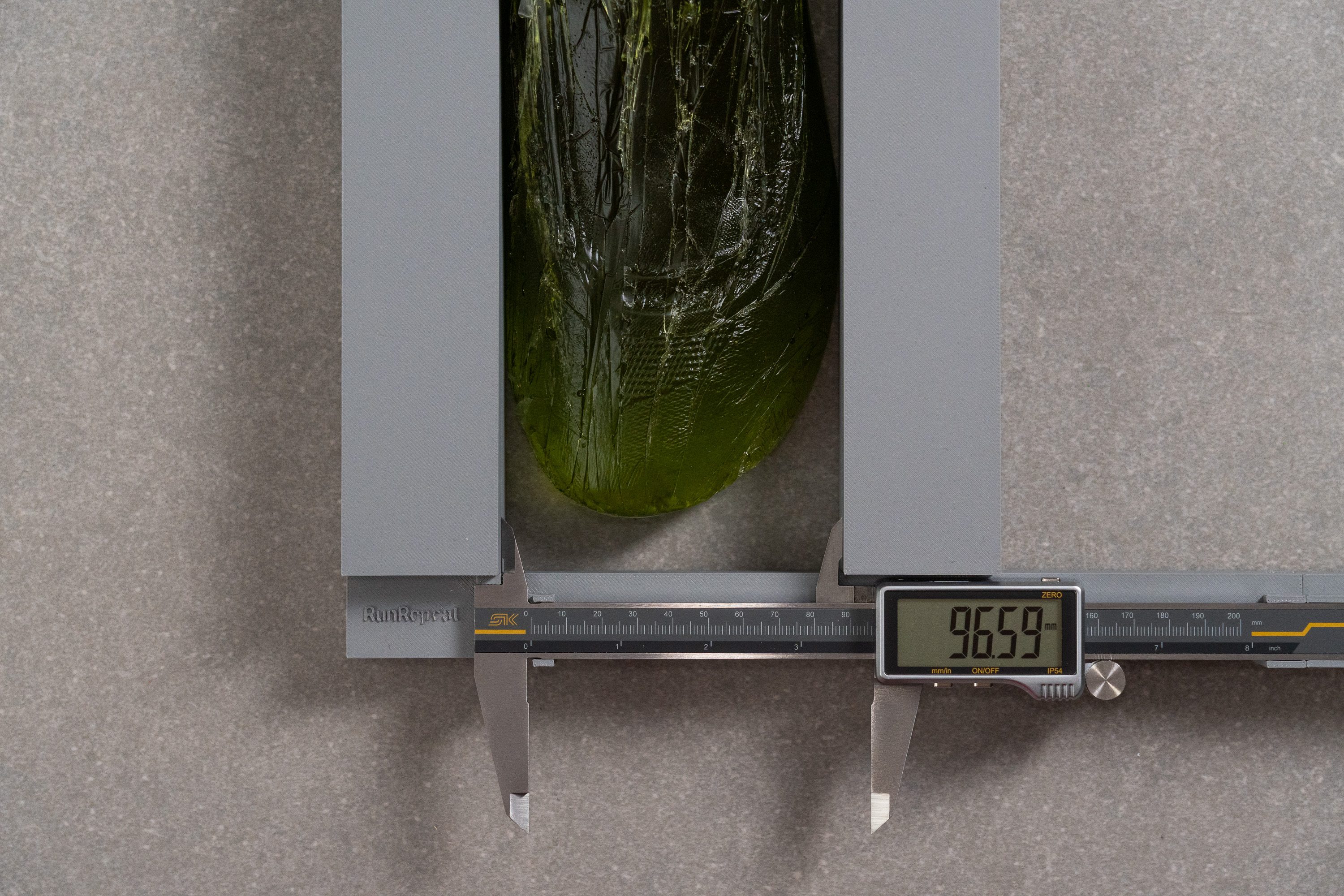
| Seek | 96.6 mm |
| Average | 95.6 mm |
Toebox width
Our second measurement confirmed the shoe’s suitability for wide feet, with a toebox width of 77.7 mm. While runners with narrow feet may find it a bit roomy, those who enjoy ample space for natural toe splay will appreciate this design too.
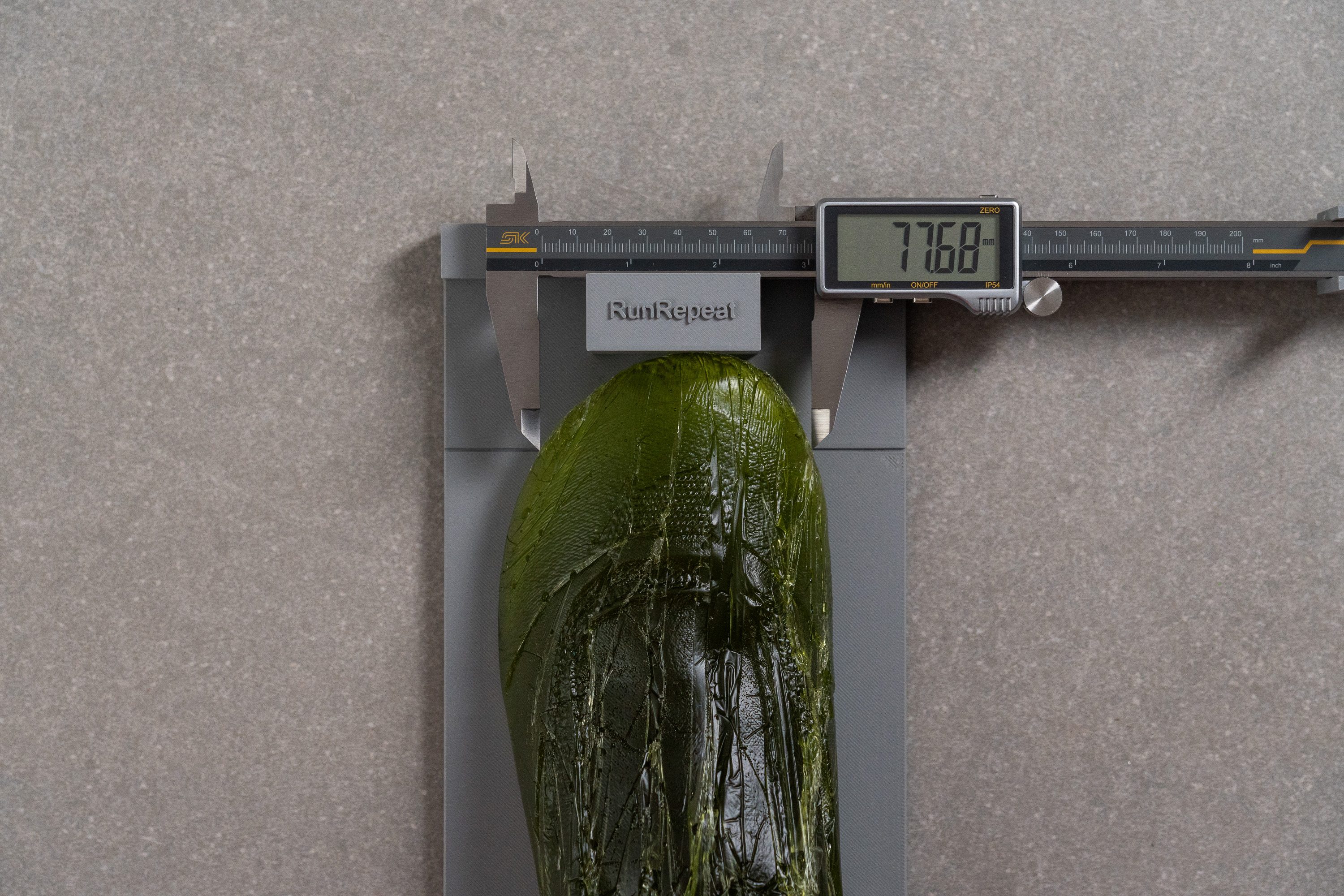
| Seek | 77.7 mm |
| Average | 74.6 mm |
Toebox height
The toebox height told a different story. At 23.1 mm, it offers a snug fit that provided a secure feel while running but might feel slightly restrictive for those with high-volume feet.
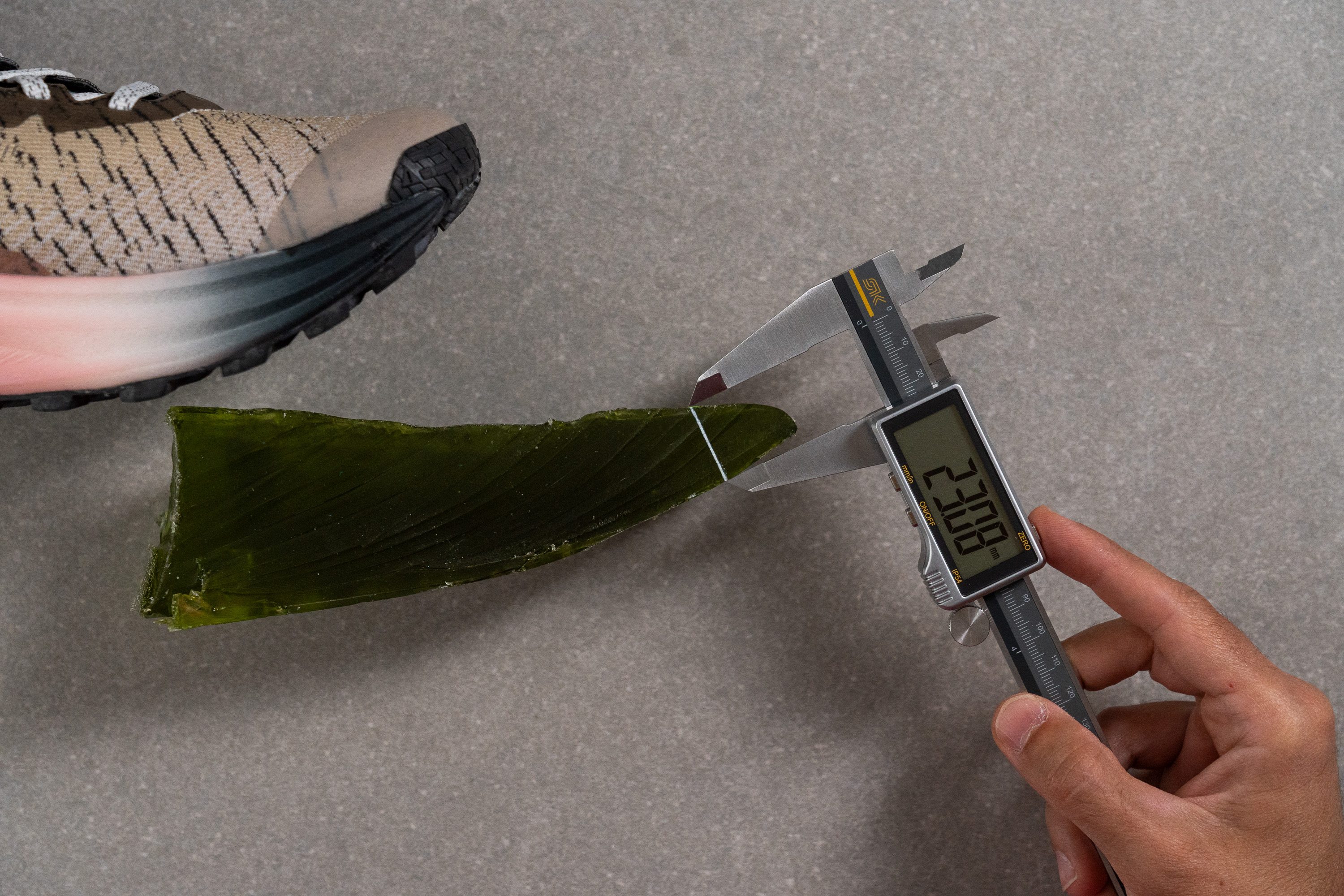
| Seek | 23.1 mm |
| Average | 27.0 mm |
Traction / Grip
Forefoot traction
We tested the KEEN Seek in our SATRA TM144 machine and recorded a solid 0.50 traction score. It’s not outstanding, but it’s steady enough for us to feel confident that the shoe handles a wide range of conditions well.
| Seek | 0.50 |
| Average | 0.60 |
Lug depth
The KEEN Seek’s 4.1 mm lugs make it impressively versatile, capable of handling short road stretches and technical trails while truly excelling on the mixed terrain in between.
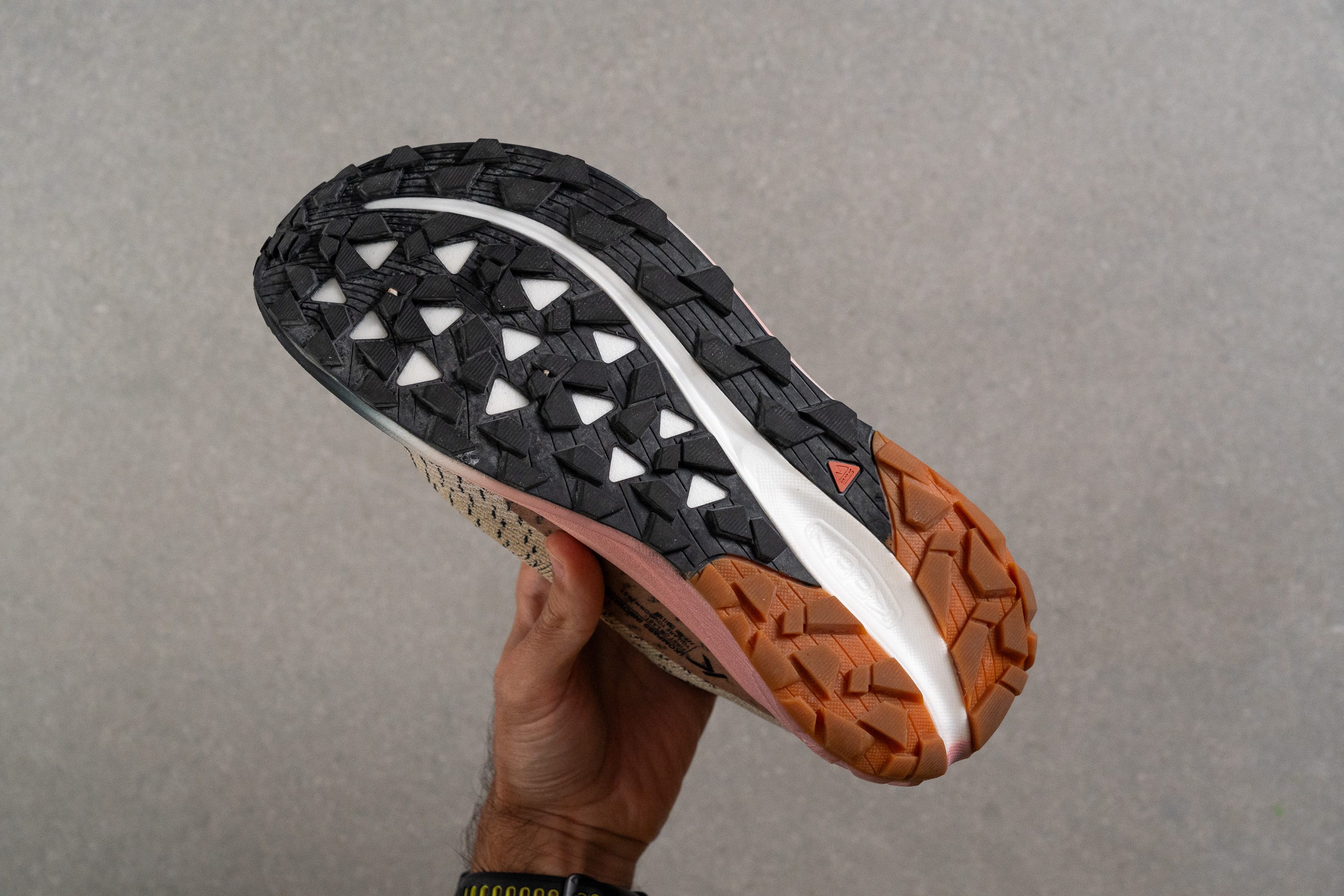
We also appreciated that KEEN put real thought into the lug design. The butterfly-shaped central lugs and trapezoidal side lugs are cleverly arranged to enhance traction and grip while cornering, as well as going uphill or downhill.
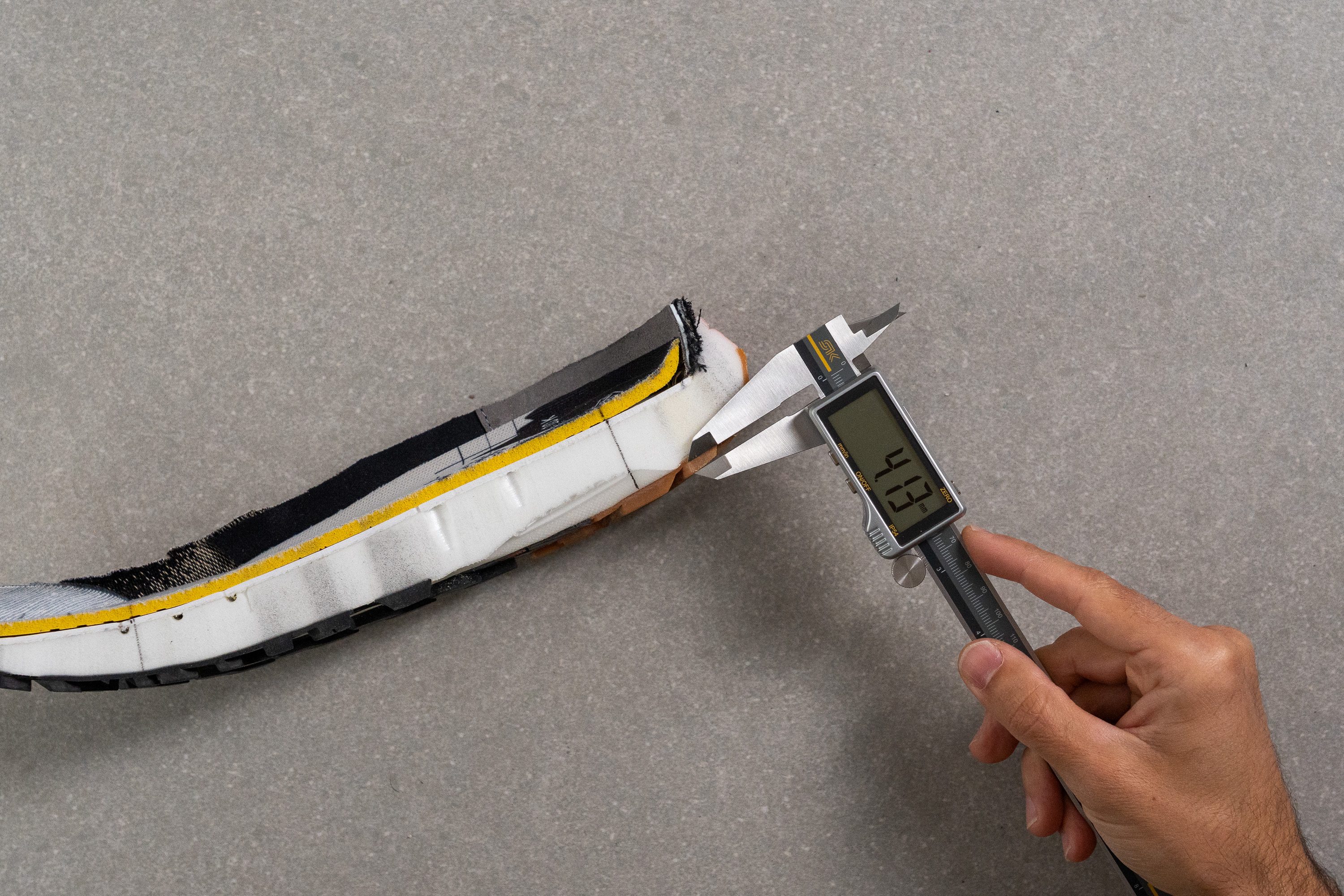
| Seek | 4.1 mm |
| Average | 3.5 mm |
Outsole design
The Seek’s outsole features a large cutout from heel to toe, an uncommon design choice for trail shoes that effectively reduces weight and boosts flexibility. It also helps the shoe adapt to uneven terrain, though runners who prioritise full-length rubber coverage and maximum midsole protection may find it less ideal.
It’s also worth noting that, unlike most brands, KEEN used two different rubber compounds: a softer brown one in the heel and a firmer black one in the rest of the shoe. This setup creates softer landings for heel strikers.
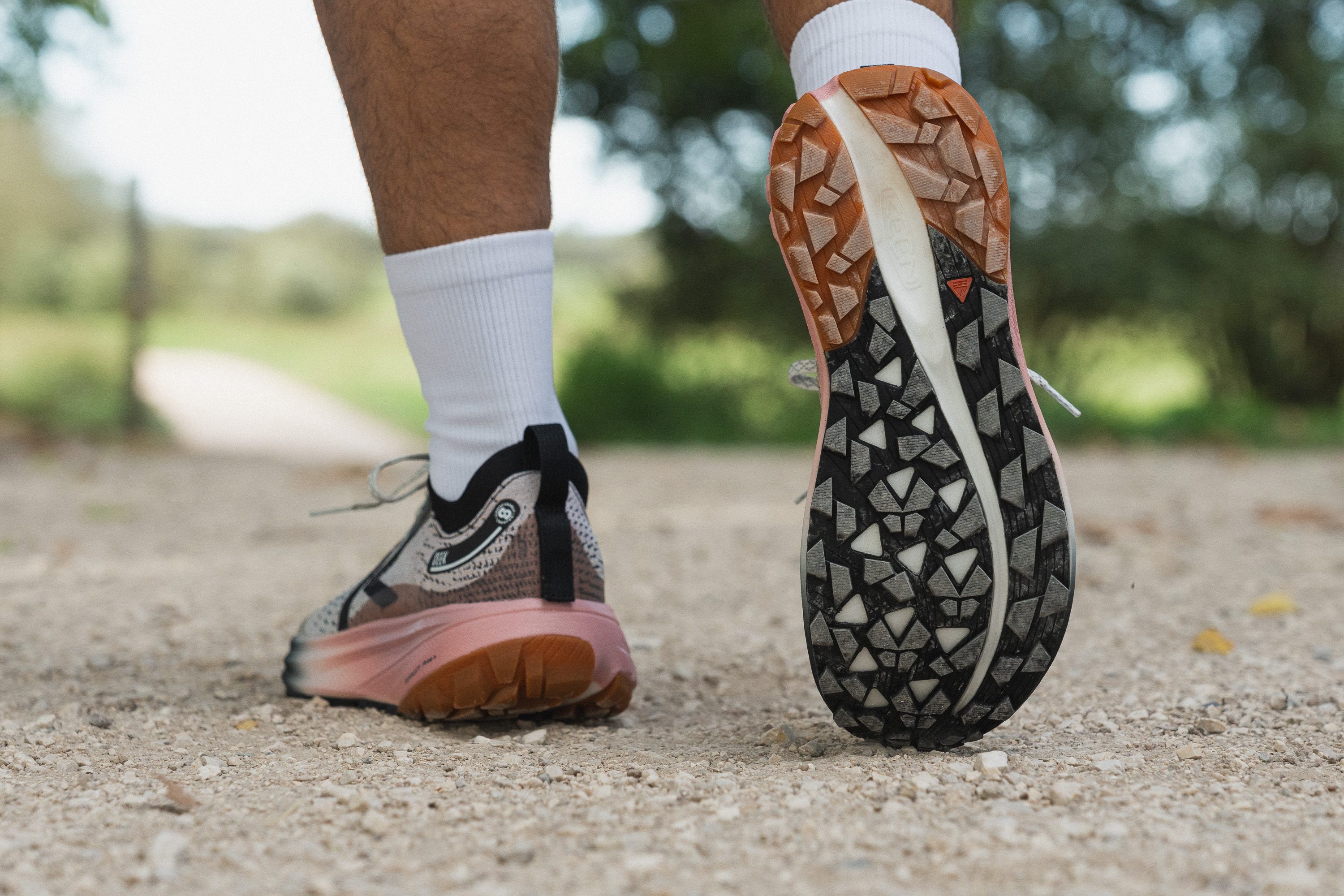
Flexibility / Stiffness
Thanks to its large outsole cutout and the absence of a rock or carbon plate, the Seek delivers impressive flexibility at 11.3N. This makes it a great option for runners seeking a well-cushioned, multi-purpose shoe that feels naturally flexible for both hiking and running.
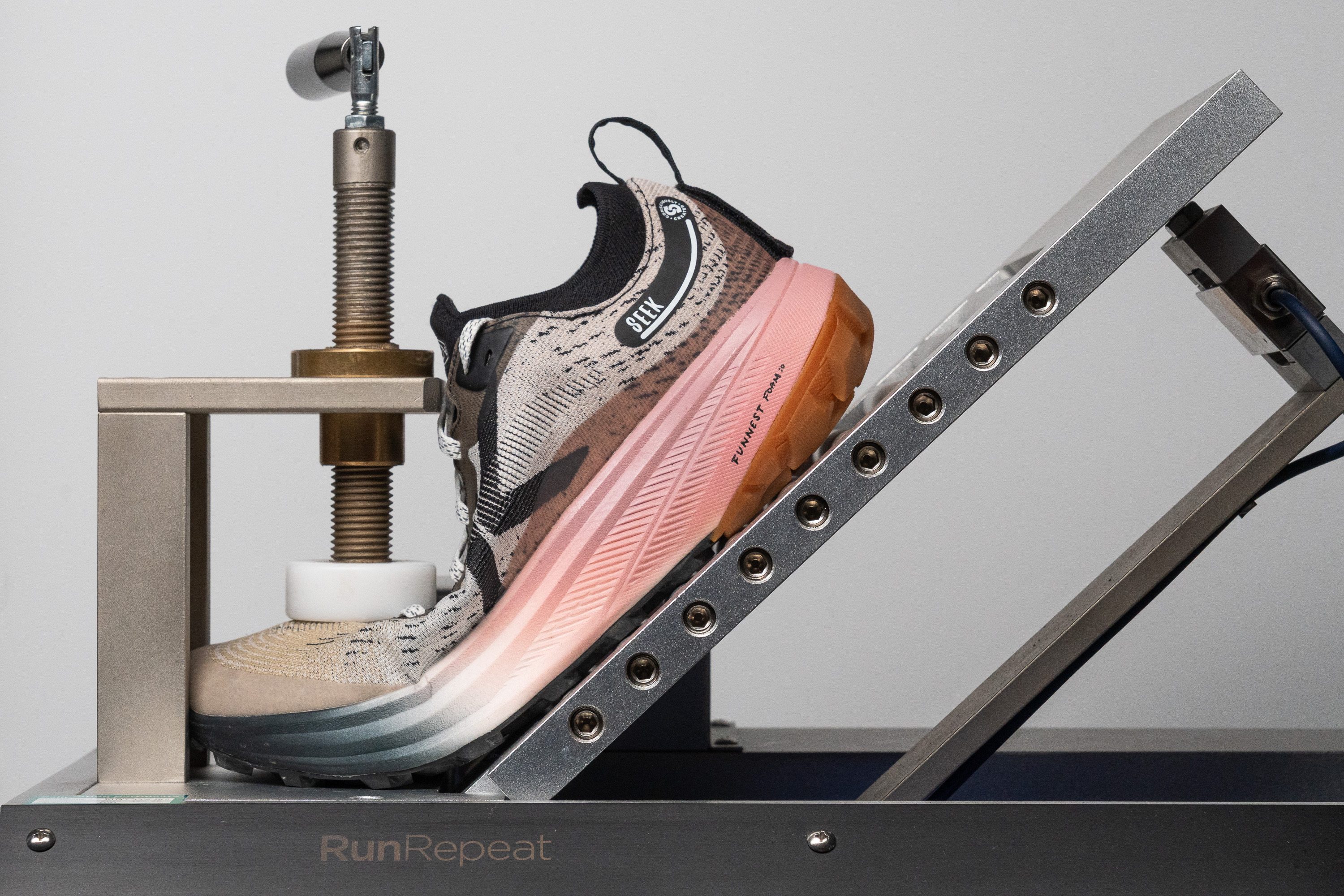
| Seek | 11.3N |
| Average | 14.6N |
Weight
One of the Seek’s weakest points is its high weight. KEEN clearly prioritized durability and comfort, which came at a cost. At 10.75 oz, we think that there’s no way around it: it feels heavier than many of its trail competitors.
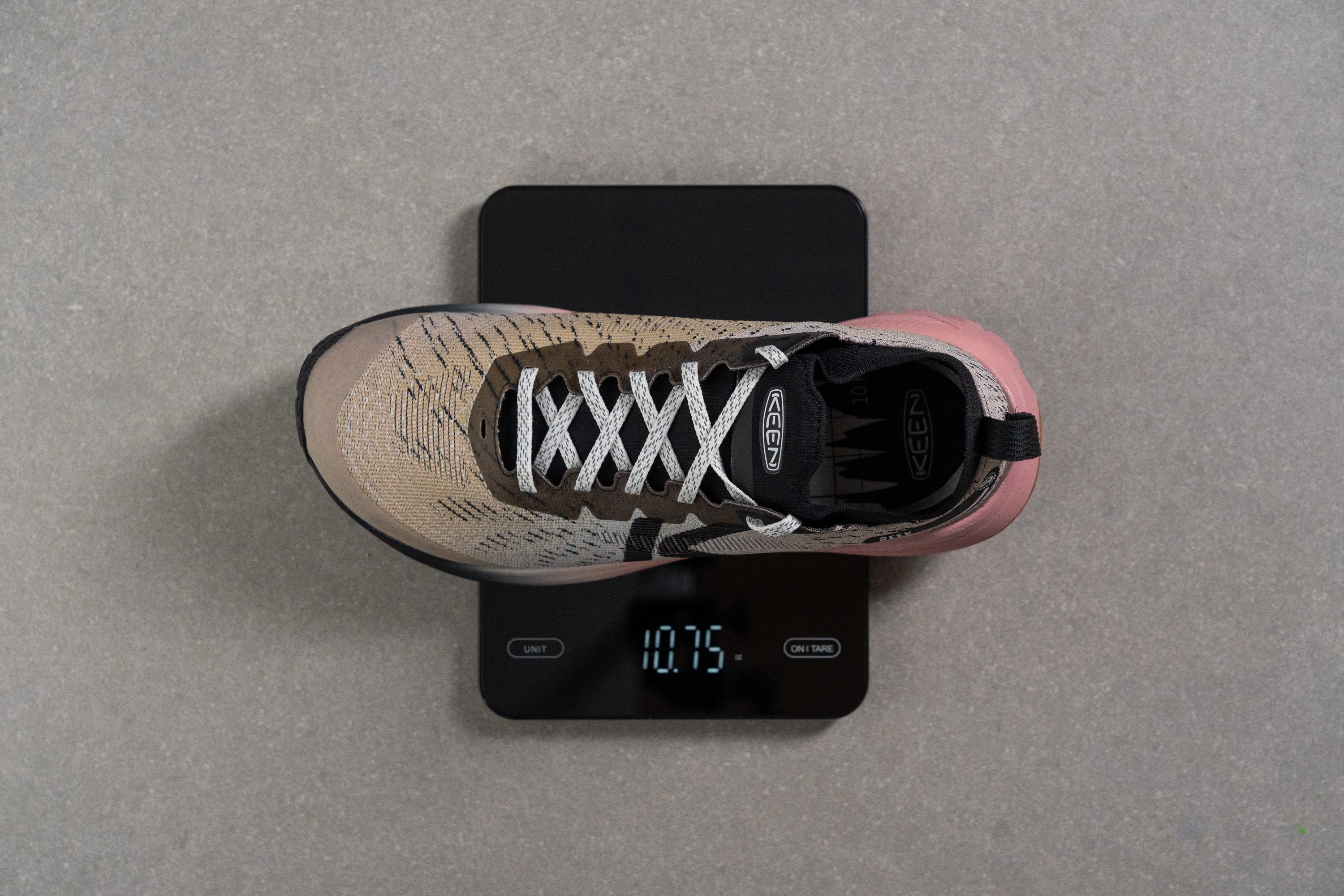
| Seek | 10.8 oz (305g) |
| Average | 10.2 oz (289g) |
Breathability
KEEN followed a classic trail formula: dense, tough materials for all-around protection while adding a breathable zone in the toebox for ventilation.
This smart balance earned the Seek a solid 4/5 in our test, even with a knit upper instead of mesh. As we proved, the toebox efficiently released almost all the smoke during our ventilation test.
When we placed the upper over our LED light, its structure became clear. The light passed only through that small breathable area, while the rest stayed completely blocked.
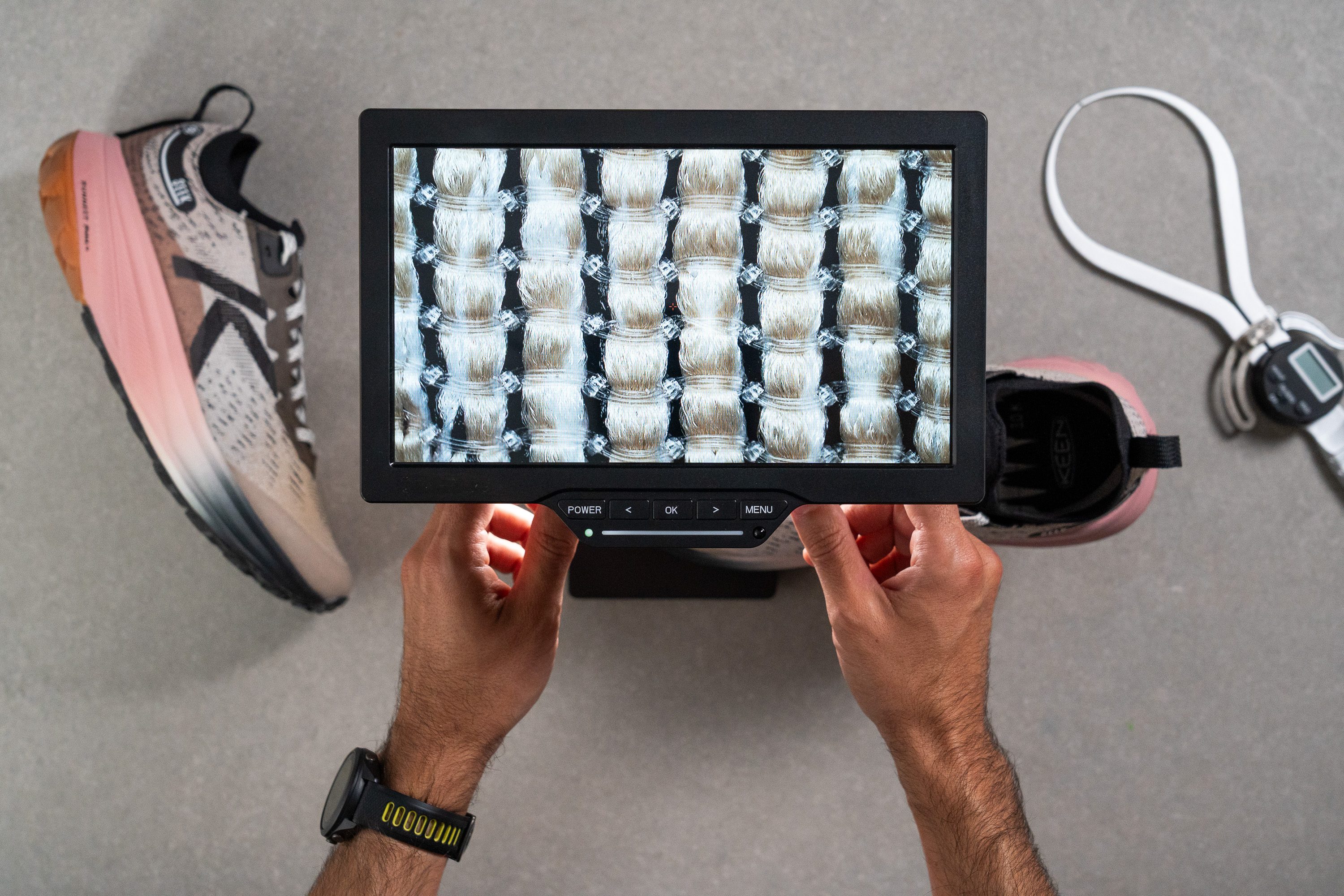
Curious about the design, we examined the ventilated section under our microscope and found it impressively well-built, a reassuring sign given the shoe’s premium price tag.
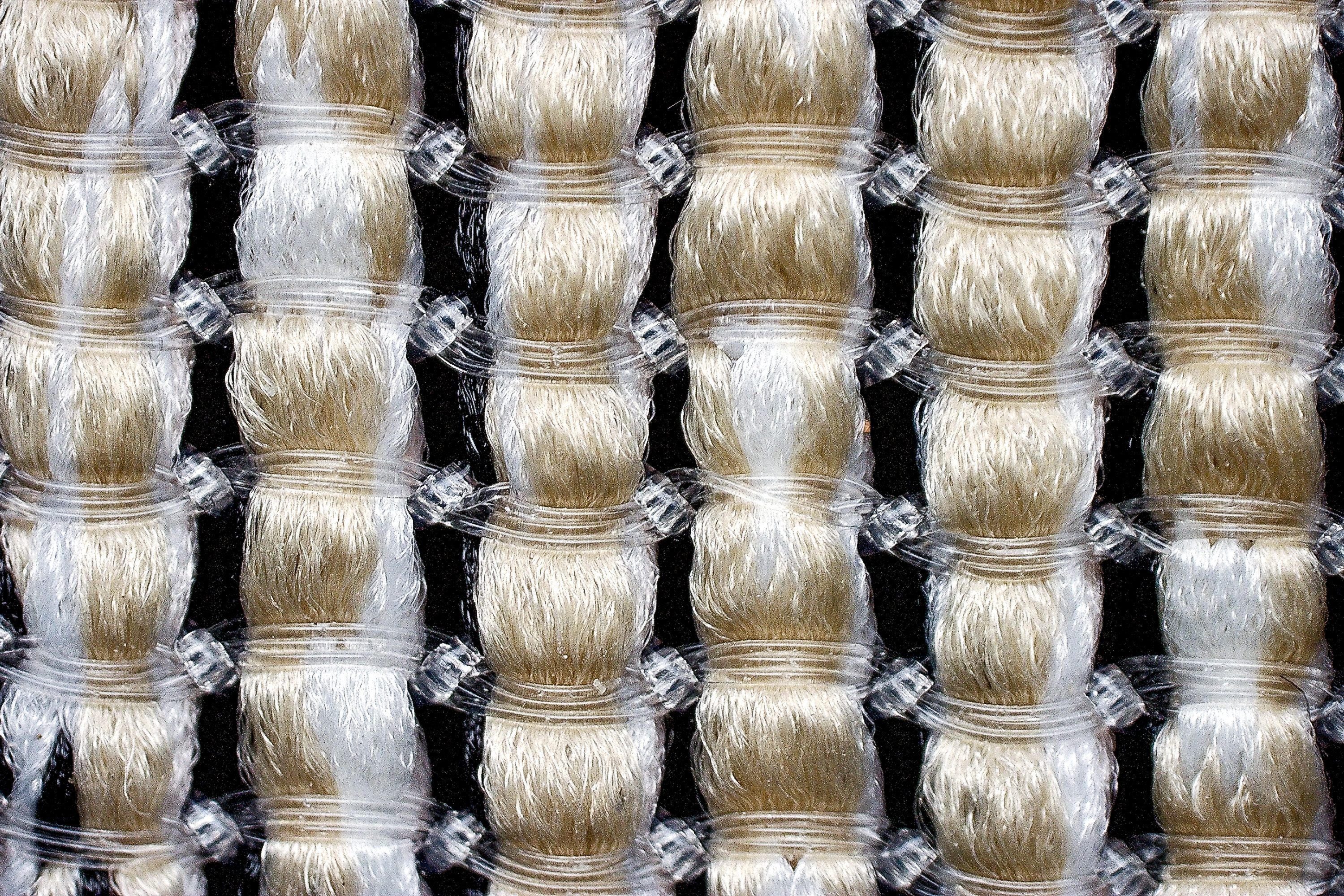
Overall, the upper left us impressed: it’s well-padded, looks cool, and offers dependable airflow for warm-weather runs.
| Seek | 4 |
| Average | 3.2 |
Stability
Lateral stability test
There are several ways to achieve good stability in a trail running shoe. Some brands, like Salomon with the S/Lab Pulsar 4 and S/Lab Ultra Glide, opt for high sidewalls that limit lateral movement while maintaining an average width.
KEEN took a different route, prioritising comfort by giving the upper minimal structure (this is especially comfortable for hiking) while widening the rear for added support to heel strikers. And there’s no single best approach here; in our view, it ultimately comes down to personal preference.
Torsional rigidity
Thanks to the Seek’s massive outsole cutout, its torsional rigidity is lower than that of most trail shoes at 3/5, making it an excellent choice for runners who enjoy a natural feel but still want generous cushioning.
| Seek | 3 |
| Average | 3.6 |
Heel counter stiffness
The heel counter is quite flexible, scoring 2 out of 5 in our manual test.
This design sacrifices some stability but greatly enhances comfort, which becomes especially noticeable during long hours of wear.
| Seek | 2 |
| Average | 3 |
Midsole width - forefoot
The forefoot doesn’t particularly stand out and feels like an average trail shoe while running.
Later in the lab, we measured 114.0 mm, which is (for now) slightly above the current average, though that number keeps increasing as newer shoes continue to grow wider.
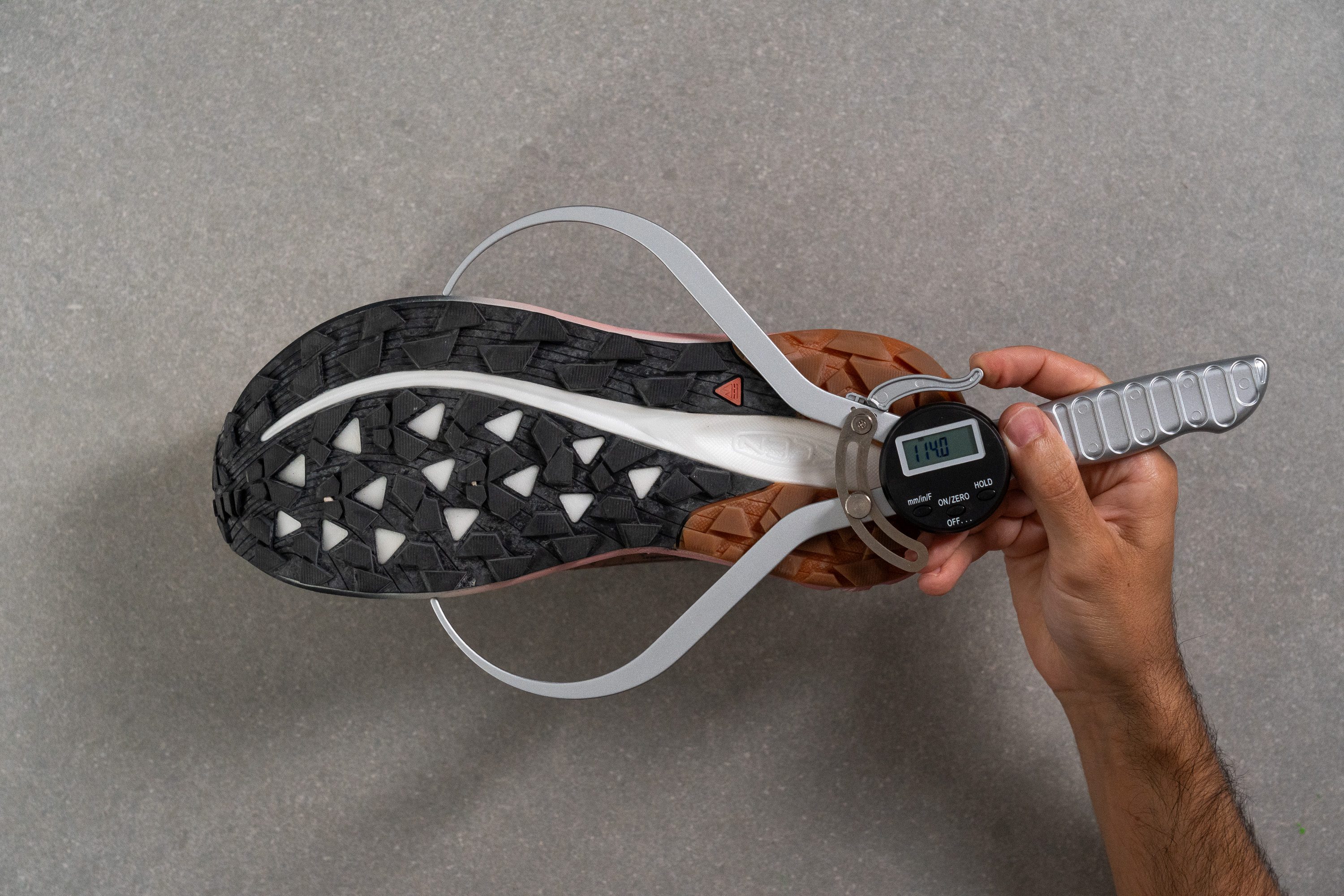
| Seek | 114.0 mm |
| Average | 112.8 mm |
Midsole width - heel
We measured the KEEN Seek’s heel at a notably wide 98.2 mm, a clear design choice aimed at counterbalancing the reduced stability from its flexible heel counter and minimally structured upper.
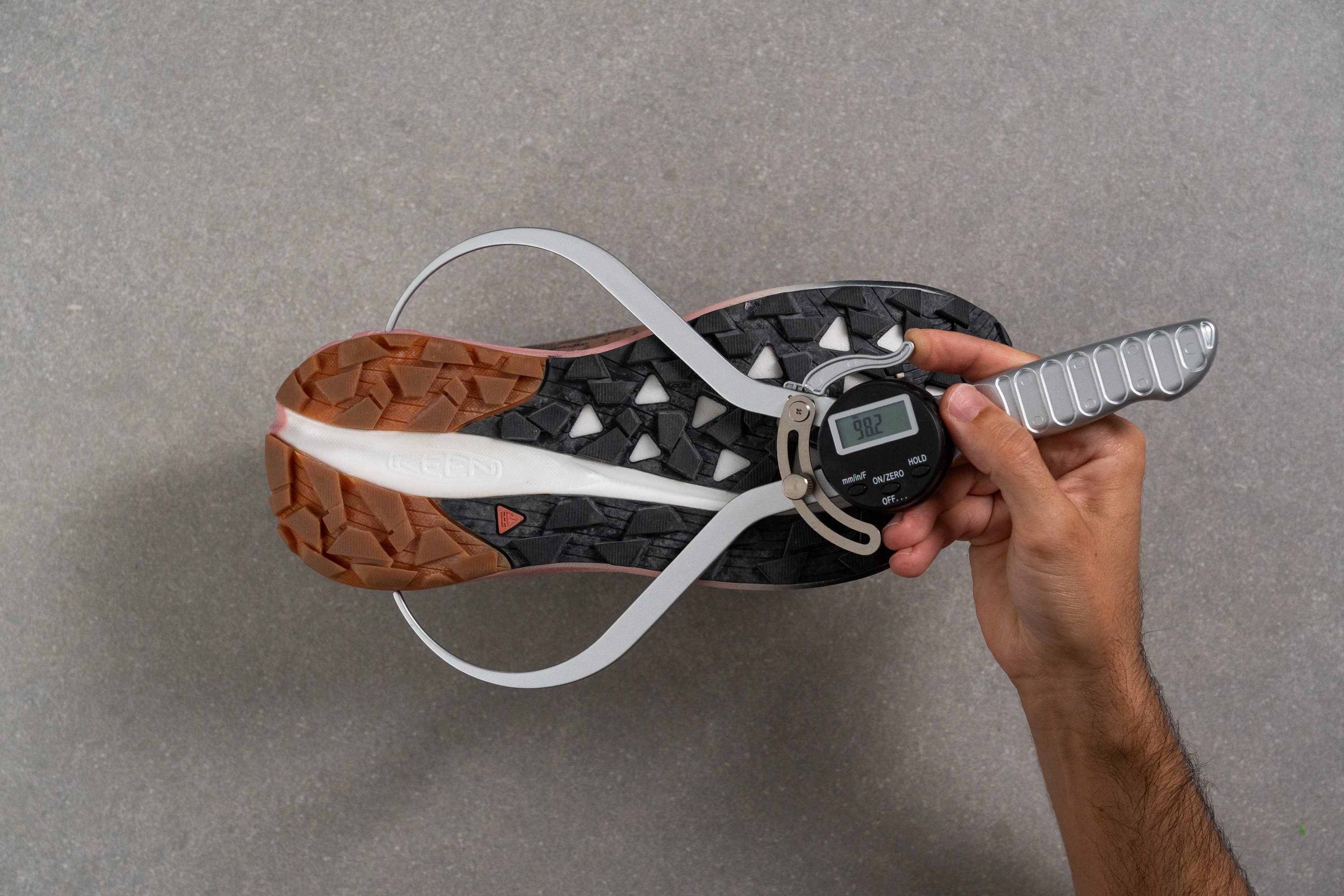
| Seek | 98.2 mm |
| Average | 89.8 mm |
Durability
Toebox durability
KEEN claims on the Seek’s official page that the shoe features “ultra abrasion-resistant performance textile uppers,” and we put that to the test.
Using our Dremel tool at 2N and 5K RPM, it's clear that the upper showed minimal damage. It's a remarkable result that earned the Seek a solid 4/5 for toebox durability.
| Seek | 4 |
| Average | 3.1 |
Heel padding durability
We proceeded with our next durability test, which takes place in the heel counter. Here, the Seek truly lived up to its bold marketing claim, showing an outstandingly extra-durable performance that scored a 5-out-of-5 result!
| Seek | 5 |
| Average | 3 |
Outsole durability
Riding the positive momentum on durability, we moved on to test the outsole. Once again, the results were impressive, showing only 0.6 mm of wear and outperforming most shoes currently available on the market.
| Seek | 0.6 mm |
| Average | 0.9 mm |
Outsole thickness
KEEN clearly prioritised protection and durability over weight, as shown by our measurement of a substantial 2.3 mm outsole thickness.
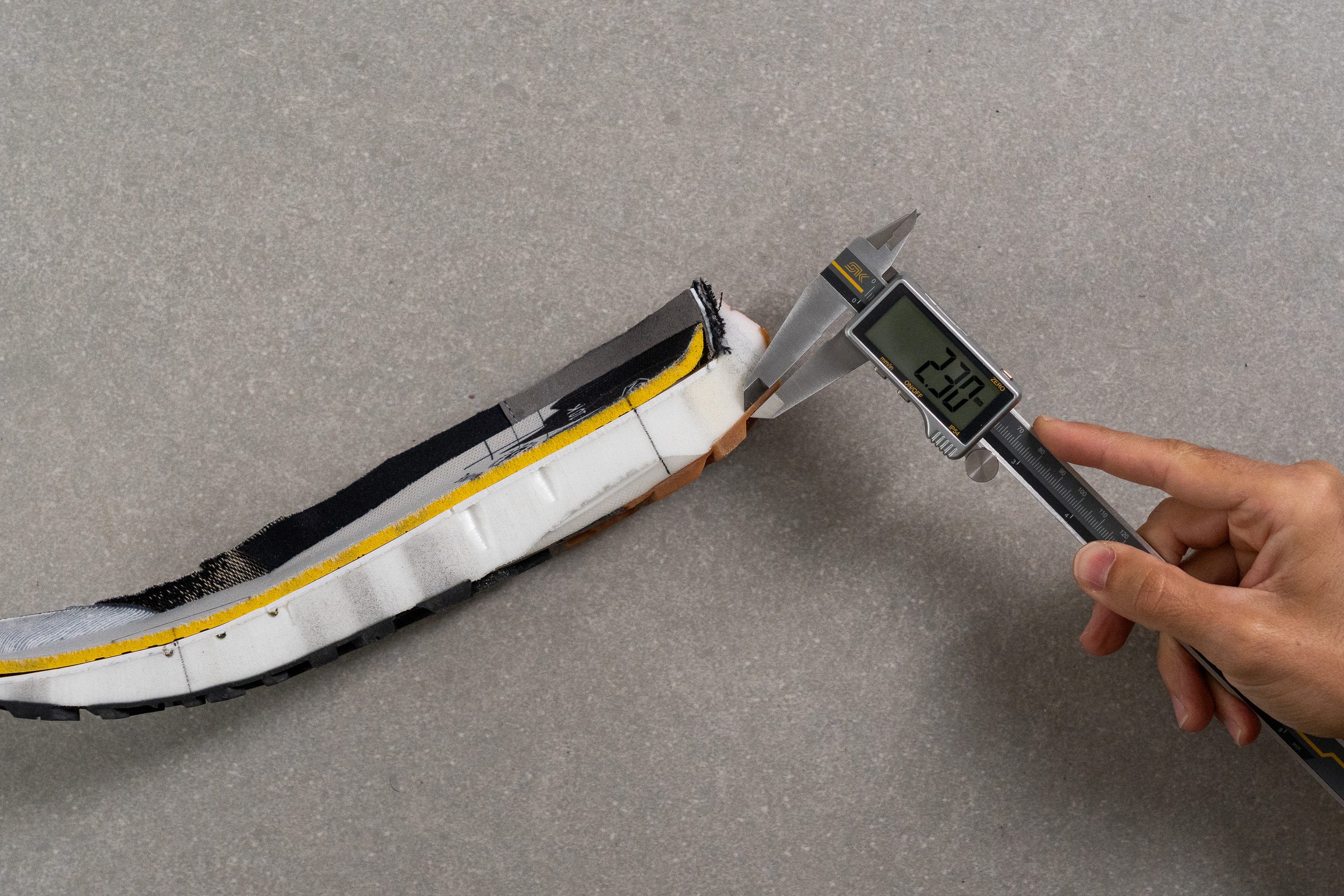
| Seek | 2.3 mm |
| Average | 2.2 mm |
Misc
Insole thickness
The insole’s thickness is fairly standard at 4.8 mm, matching the range that we usually see in most trail shoes.
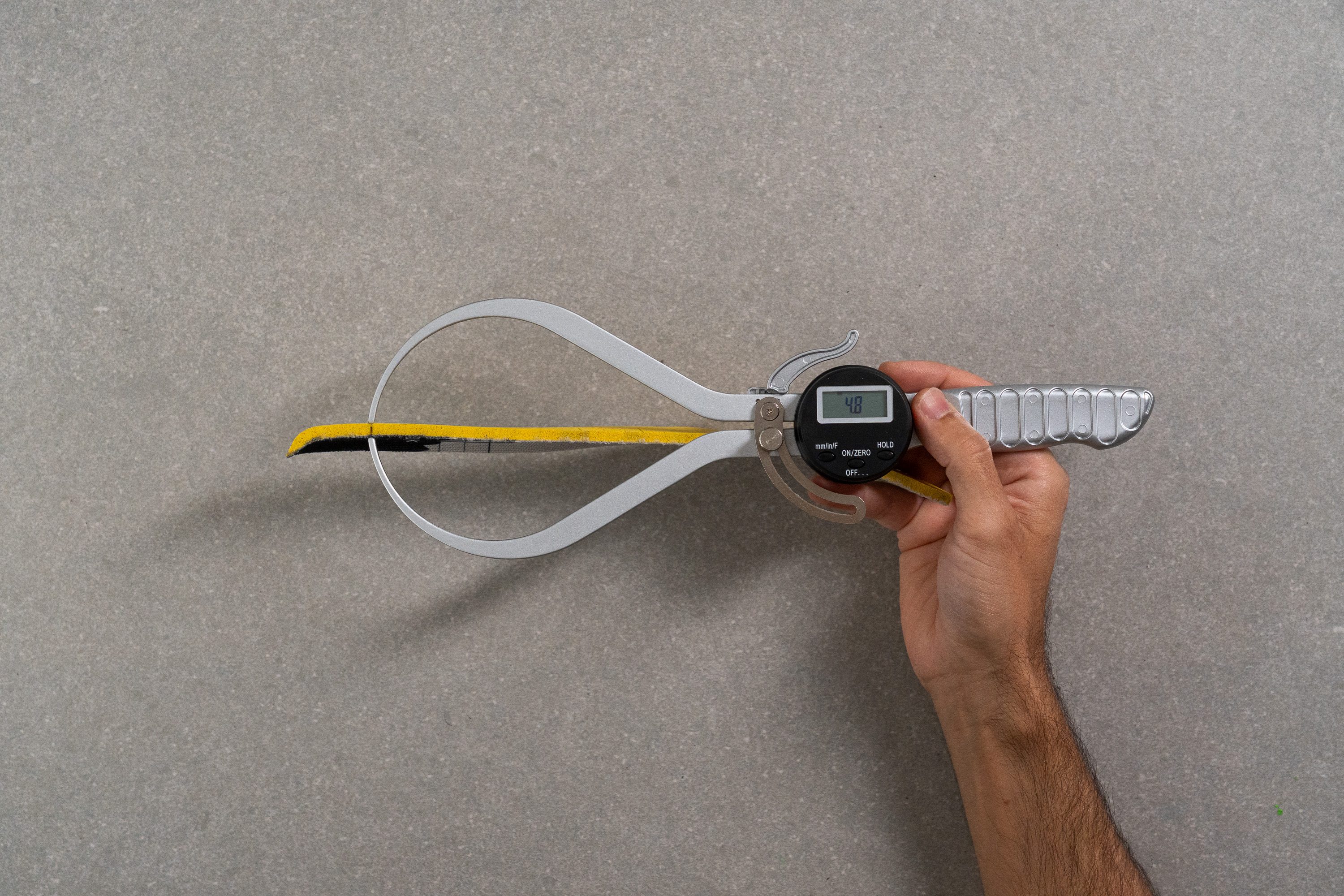
| Seek | 4.8 mm |
| Average | 4.7 mm |
Removable insole
The insole is removable, but it looks so good that we prefer to keep it in place. Honestly, other brands should take note... this shoe is packed with small design details.
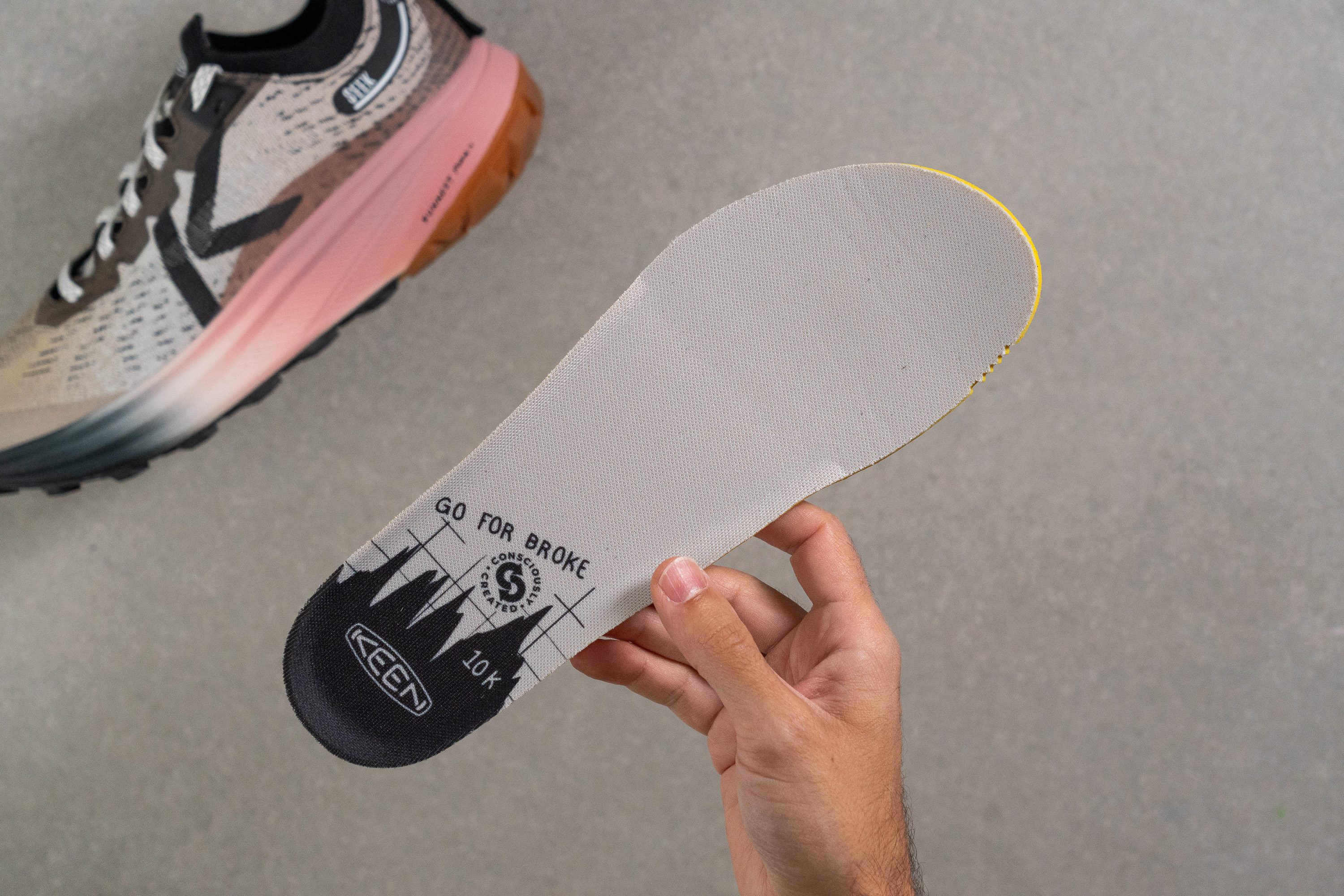
| Seek | Yes |
Midsole softness in cold (%)
Mixing 20% PEBA with 80% EVA in the QuantumFoamX compound truly paid off, as PEBA provides excellent cold resistance. During our lab test, we discovered a cold-proof performance, showing only a 16% change after 20 minutes beside our ice-creams.
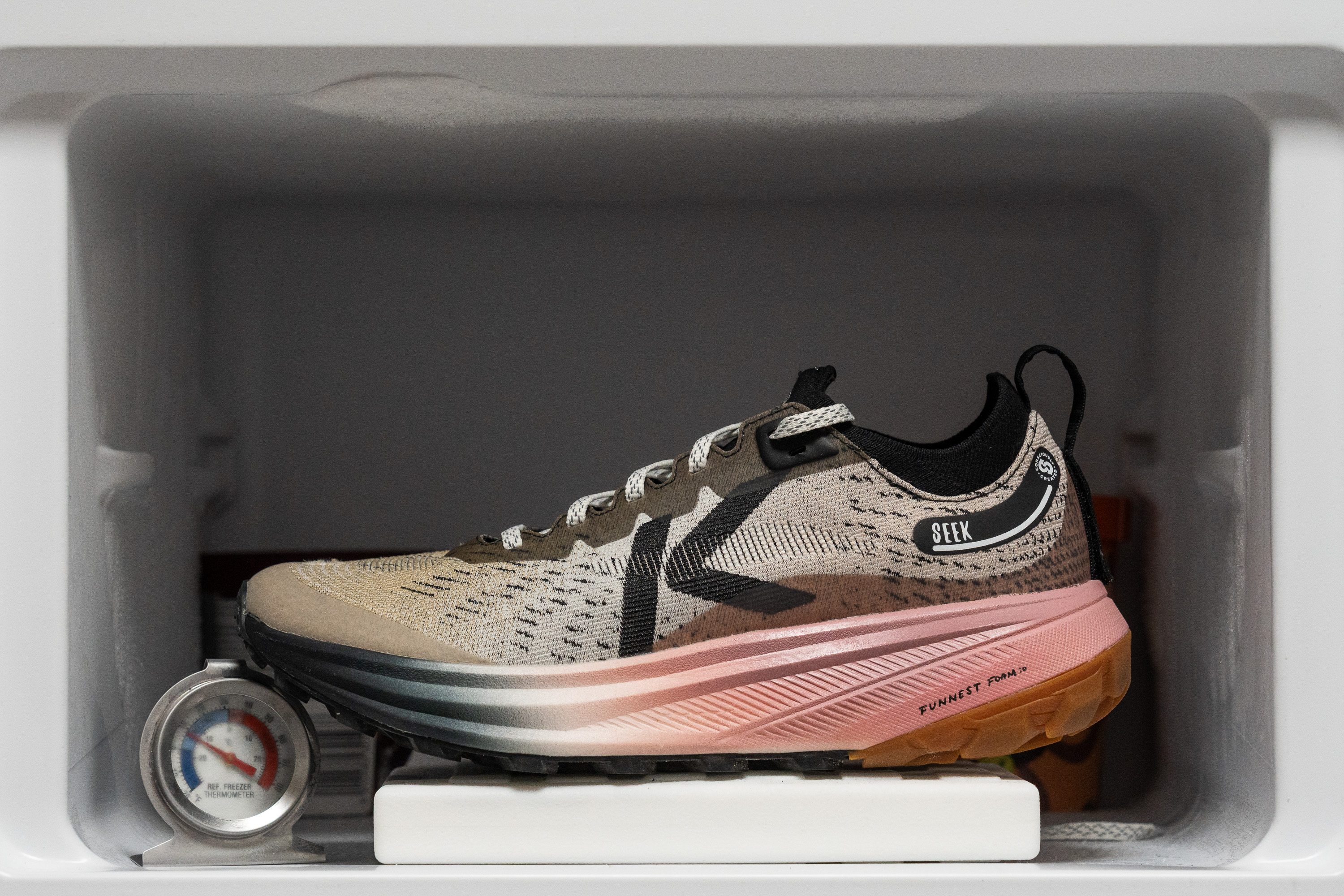
| Seek | 16% |
| Average | 26% |
Reflective elements
Although the shoe lacks reflective elements, the laces step in to do the job, adding a subtle yet effective touch of visibility.
| Seek | Yes |
Tongue padding
We discovered that the Seek’s laces have a good length and look spot-on for a trail shoe. We already stated many times how brands cut corners with cheap laces, so it’s nice to see KEEN include these high-quality ones.
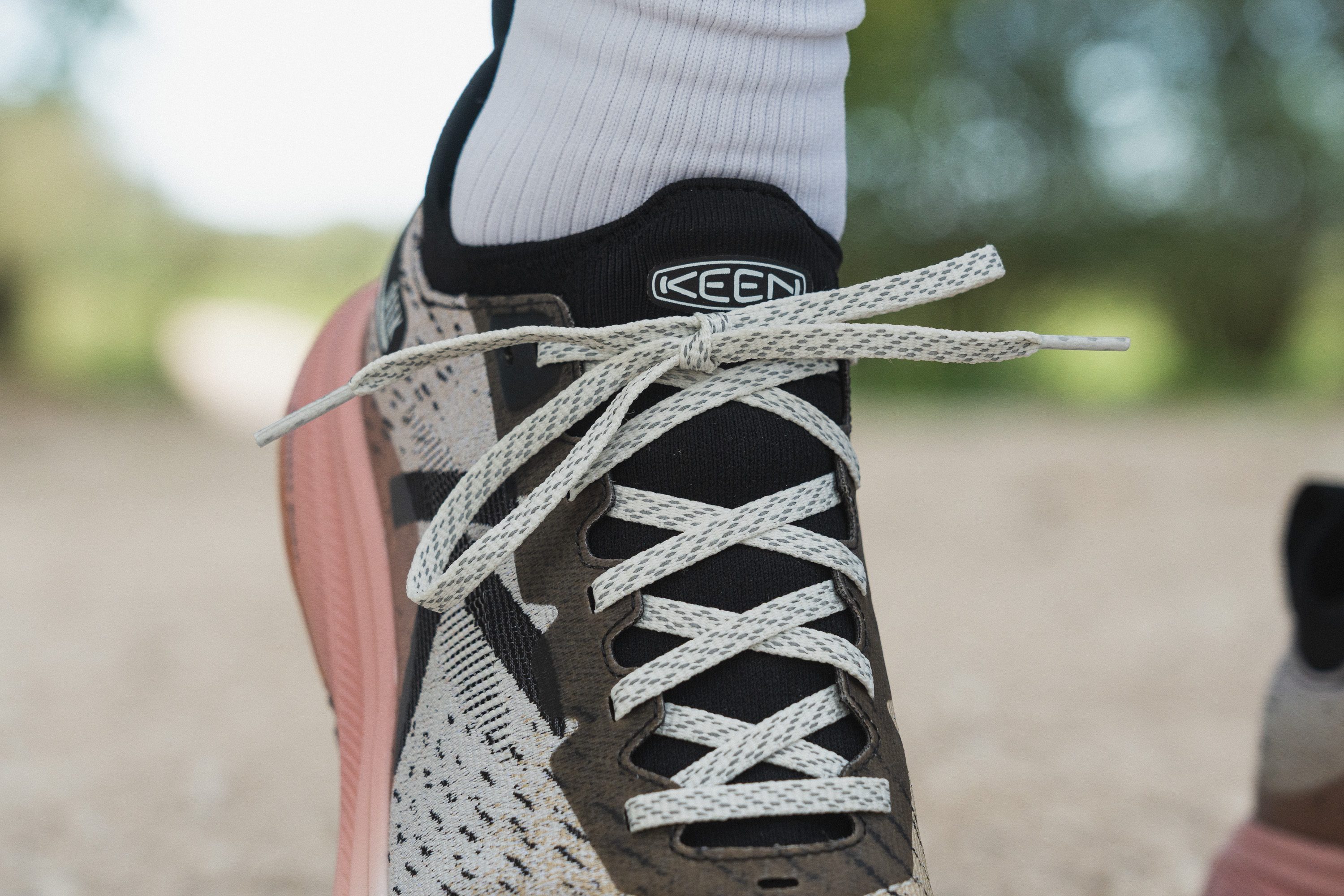
The tongue further proves the brand’s comfort-first approach, as it features 8.8 mm of plush padding. We found it really cushioned and it protects the instep effectively, though it adds a bit of weight compared to thinner designs.
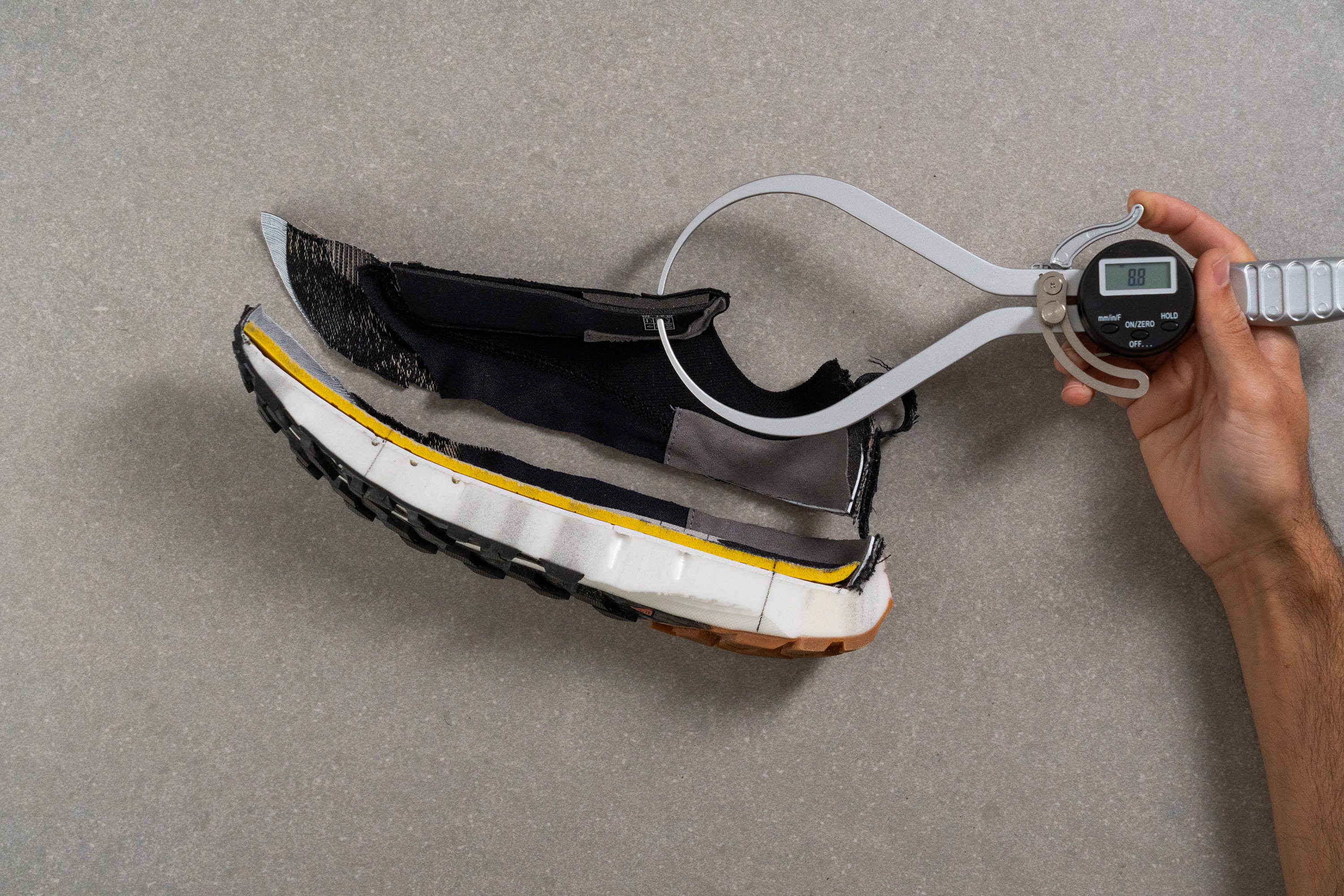
| Seek | 8.8 mm |
| Average | 6.4 mm |
Tongue: gusset type
The Seek features a tongue with a sock-like construction that we really enjoyed. This design provides a precise and secure fit while effectively blocking out gravel and small debris from entering the shoe.
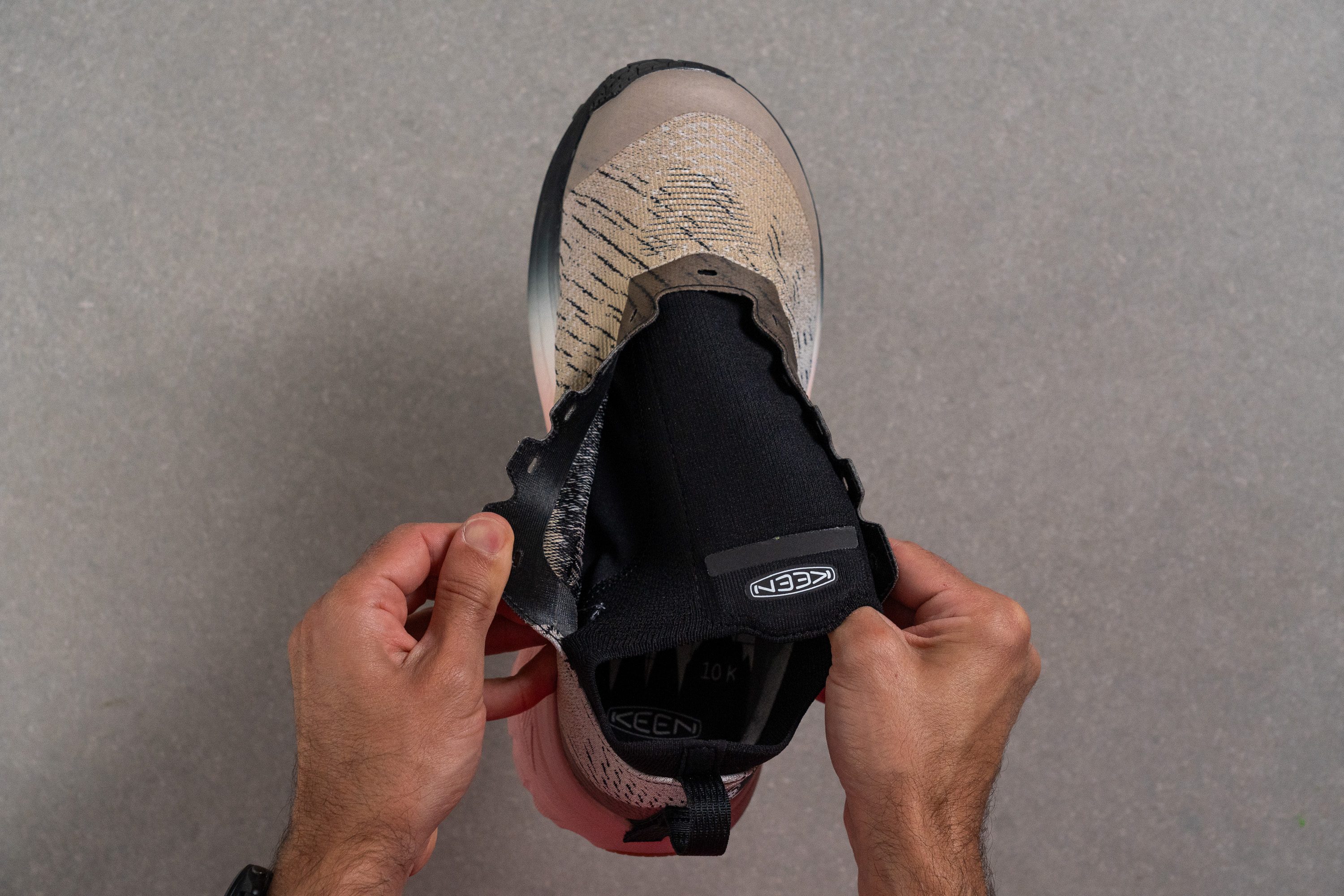
| Seek | Sock like |
Price
The KEEN Seek includes a few unique design touches and solid durability, but its higher price puts it above many comparable trail shoes. While we can't say it's not fairly priced, we think it could be somewhat costly for what it offers if you care about performance above everything else.
| Seek | $185 |
Heel tab
One clever detail we discovered in the KEEN Seek is its finger-loop heel tab, as it also works as a built-in Velcro attachment for gaiters!
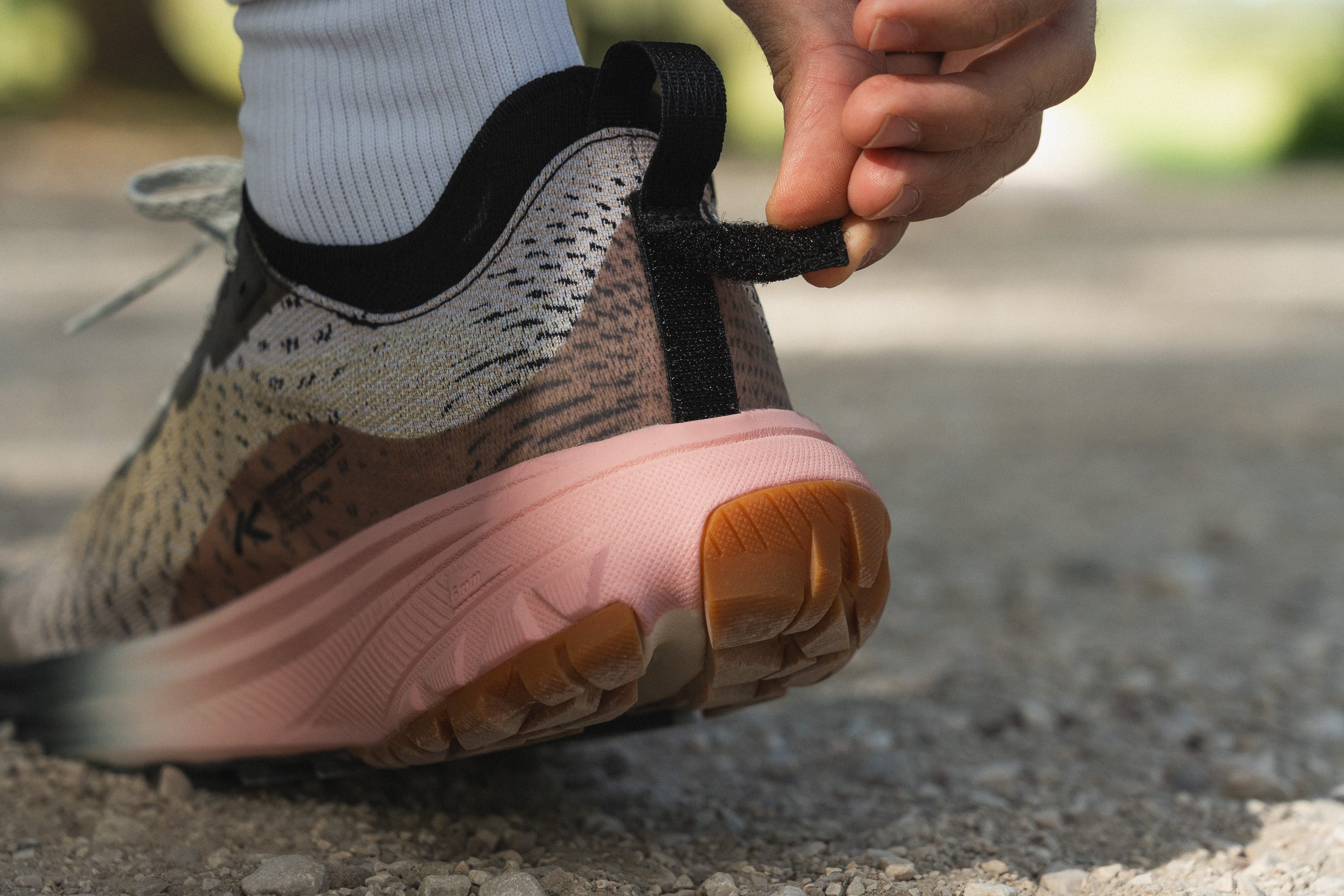
| Seek | Finger loop |
Lace garage
Another well-executed detail from KEEN is the integrated lace garage on the tongue, which keeps the laces neatly in place and looks far cleaner than setups using an elastic tongue strap like in the ASICS Trabuco Max 4.
